Discover 50 Awe-Inspiring Natural Wonders Across The Globe That Defy Belief
26 Mar 2024The world is full of wonders and natural treasures that impress and amaze. The Grand Prismatic Spring, Salar de Uyuni, and Rainbow River are just some examples of this. We have compiled an incredible selection of natural wonders that will surely leave you jaw-dropped.
1. Mud Volcanoes
Mud volcanoes are geological phenomena that occur in various parts of the world, but perhaps nowhere are they as prolific and captivating as in Gobustan, Azerbaijan. Situated on the Absheron Peninsula, Gobustan is renowned for its vast expanse of mud volcanoes, making it a unique destination for geology enthusiasts and curious travelers alike.
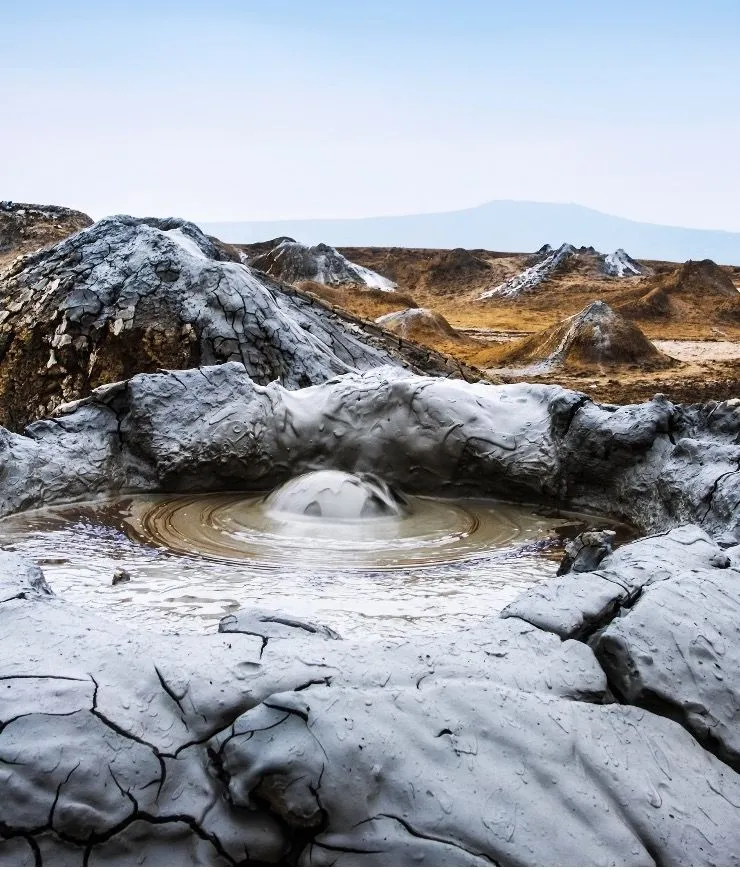
People from all over the world flock to these mud volcanoes not only to admire them. It is believed that mud has unique properties. Thanks to them, people improve their health and even rejuvenate. In addition, these archaeological treasures are included in the UNESCO heritage, which attracts even more attention to them.
2. The Grand Prismatic Spring
Nestled within the awe-inspiring Yellowstone National Park in the United States lies a natural wonder that seems plucked from the palette of an otherworldly artist: The Grand Prismatic Spring. As one of the most iconic features of Yellowstone, this mesmerizing hot spring captivates visitors with its vibrant colors and ethereal beauty.
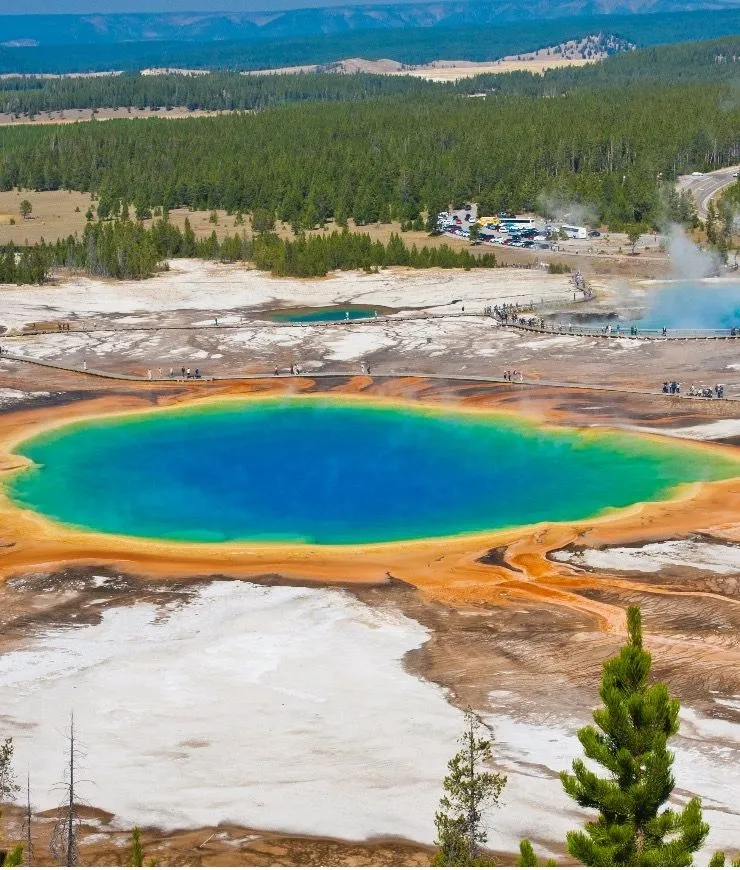
The spring reveals its kaleidoscope of hues, ranging from deep cerulean blues to striking shades of emerald green and fiery orange. The brilliant colors are a result of microbial mats that thrive in the mineral-rich waters, creating a living tapestry unlike any other. This unique environment supports a diverse array of microorganisms, some of which are found nowhere else on Earth.
3. The Darvaza Gas
Deep in the heart of the Karakum Desert in Turkmenistan lies a fiery spectacle that defies both logic and expectation: the Darvaza Gas Crater, more famously known as the "Door to Hell''. This mysterious occurrence has fascinated explorers, scientists, and inquisitive travelers worldwide.
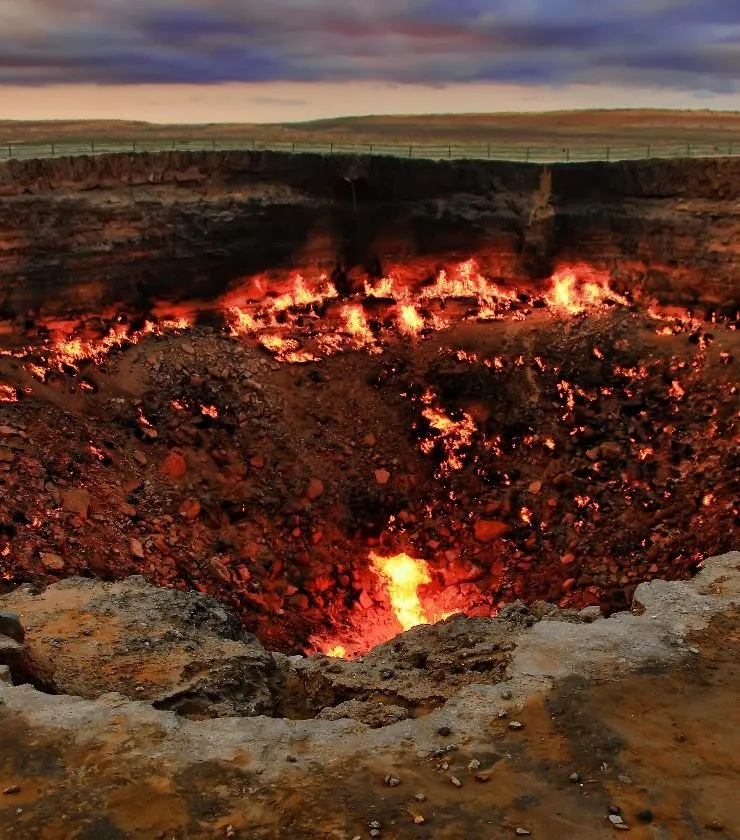
Crater is a gaping chasm of fire, with flames leaping high into the night sky and casting an eerie glow over the surrounding desert sands. Visitors to the crater are greeted by the sight of flames dancing on the surface of the crater, creating a mesmerizing display of light and heat. It's a place where the flames of ancient legend still burn bright in the modern world.
4. The White Desert
In Egypt, there is the White Desert National Park, which covers over 300 square kilometers. This area is known for its abundance of rocks formed by erosive sandstorms. Long ago, the place that now experiences record-high temperatures and sand was once the seabed. Slowly, the water level began to drop, and marine vegetation and underwater creatures began to die out.
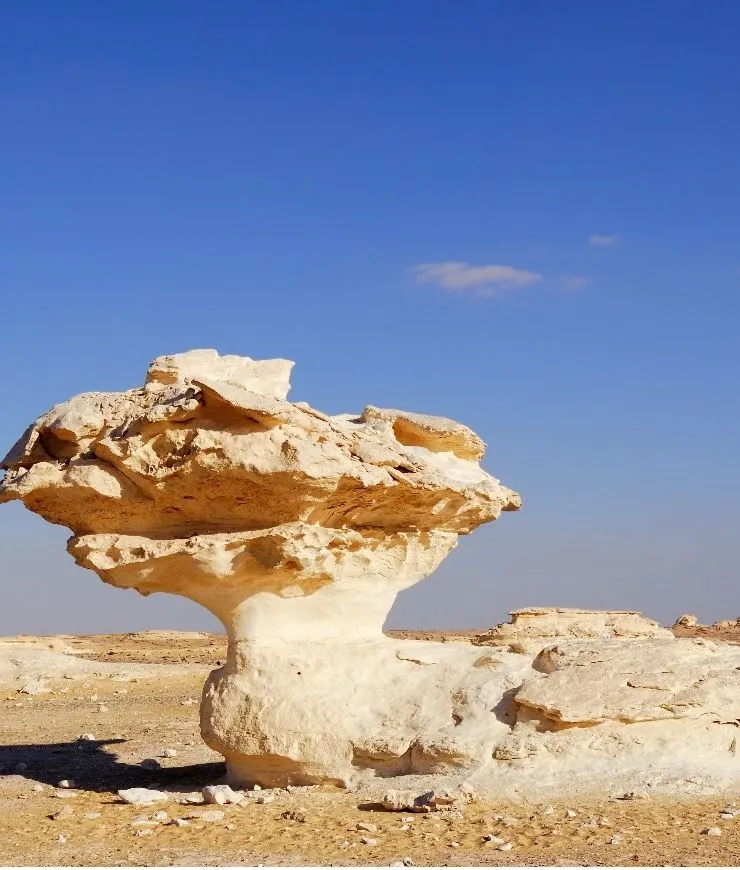
As a result, all that remained were giant chunks of chalk, which still stand today. Each has a unique shape that can be admired for hours. The shape of this rock proves that time and nature can change everything. Soft parts of the rocks were eroded by the pressure of the sea and sandstorms. What we see today is the result of nature's work over a thousand years.
5. Plitvice Lakes National Park
Plitvice Lakes National Park of Croatia is home to sixteen azure-colored lakes, each connected by a series of cascading waterfalls and travertine barriers. These lakes are divided into the Upper and Lower Lakes, with the largest, Lake Kozjak, situated in the middle. The park simply enchants with its beauty and unusual.

The park's waterfalls are formed by the deposition of travertine, a type of limestone that is dissolved in the water and then re-deposited as a mineral. Over time, this process has created a series of natural dams, pools, and cascades, adding to the park's ethereal beauty. Visitors to the park can explore a network of well-maintained wooden boardwalks and hiking trails.
6. The Giant's Causeway
This place is called the Giant's Causeway. It is located on the coast of Northern Ireland. It consists of 40,000 columns. Legend has it that the Giant's Causeway was created by the legendary Irish giant Finn McCool, who built the causeway as a pathway to Scotland to confront his rival giant, Benandonner. However, scientists tell a different story—one of volcanic activity millions of years ago.
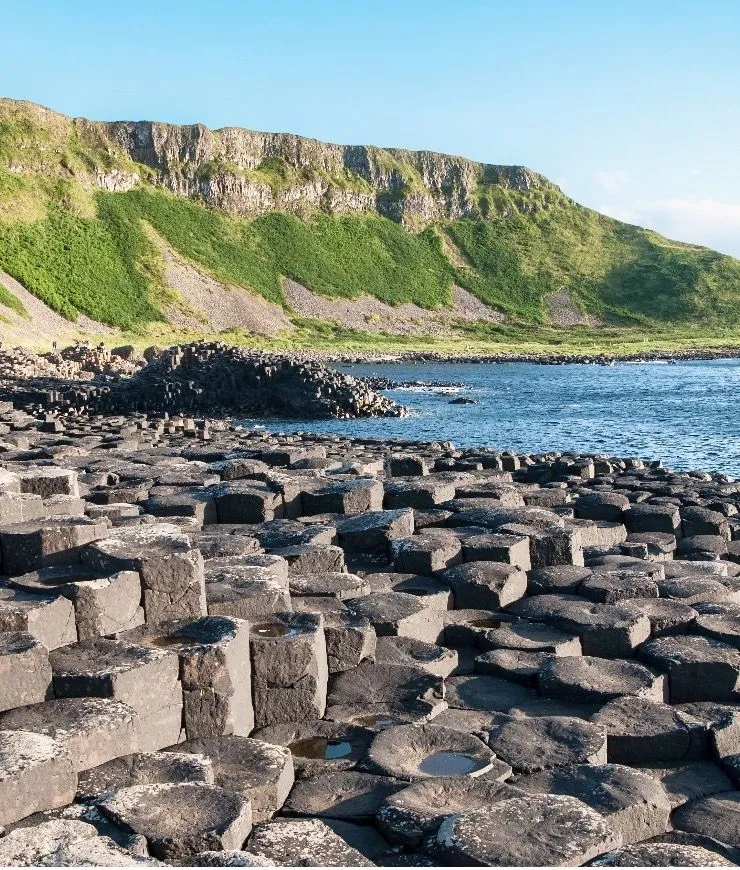
According to scientific hypothesis, these whimsical stone columns were formed 50-60 million years ago, when during a volcanic eruption, molten and highly fluid basaltic lava surged to the surface directly into the bed of an existing river. The outer layers of lava quickly cooled upon contact with the water, forming the stone columns.
7. The Living Root Bridges
The Living Root Bridges of Cherrapunji in India are not just a product of human labor but also a natural wonder that captivates with its uniqueness and sophistication. Located in the state of Meghalaya, they are considered some of the most extraordinary architectural landmarks in the world. These living bridges are primarily made up of wooden roots that intertwine and grow downwards from horizontal platforms.
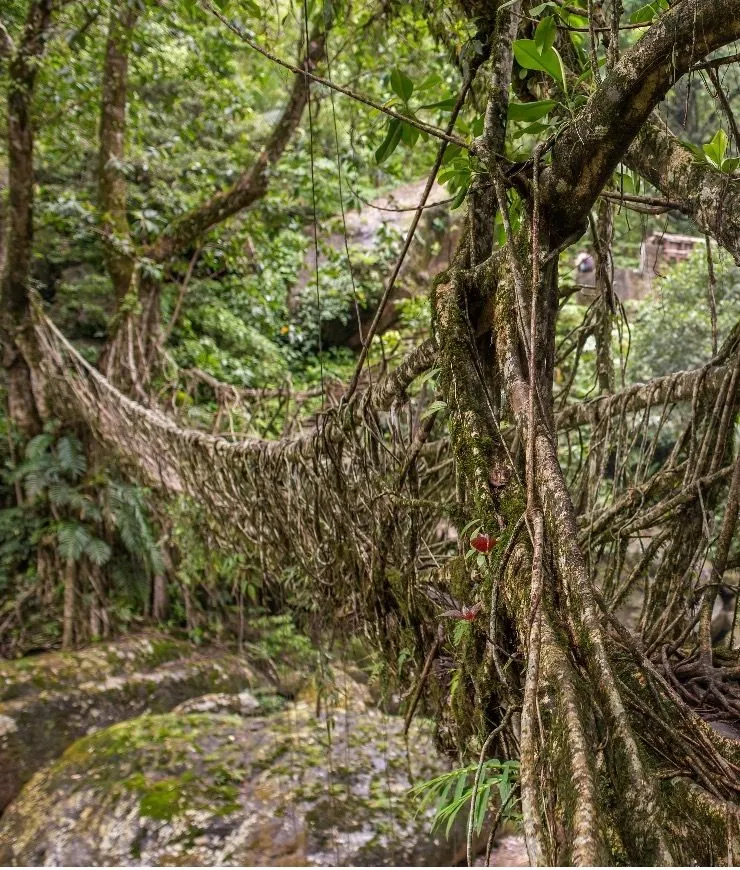
The uniqueness of these bridges lies in the fact that they grow and strengthen over time, making them even stronger with each passing year. They are capable of retaining their strength and stability for decades. These living bridges play an important role for the local population, providing them with connections between villages and reliable access to essential resources.
8. Salar de Uyuni
Salar de Uyuni in Bolivia is a place of otherworldly beauty and surreal landscapes, captivating travelers with its vast expanses of salt flats that stretch as far as the eye can see. As the world's largest salt flat, covering over 10,000 square kilometers, Salar de Uyuni is a breathtaking natural wonder that must be seen to be believed.

Formed by the evaporation of prehistoric lakes, Salar de Uyuni is a vast expanse of white salt crust that creates a mesmerizing mirror effect, especially during the rainy season when a thin layer of water covers the flats, reflecting the sky in a stunning display of symmetry. The region's unique ecosystem is supported by a network of brine pools and wetlands that provide habitat for a wide variety of species.
9. Perito Moreno Glacier
The Perito Moreno Glacier named after Argentine explorer Francisco Moreno, is one of the most iconic and accessible glaciers in the world. Stretching over 250 square kilometers and reaching heights of up to 74 meters above the surface of Lake Argentino, Perito Moreno is not only one of the largest glaciers in the region but also one of the few glaciers in the world that is still advancing.
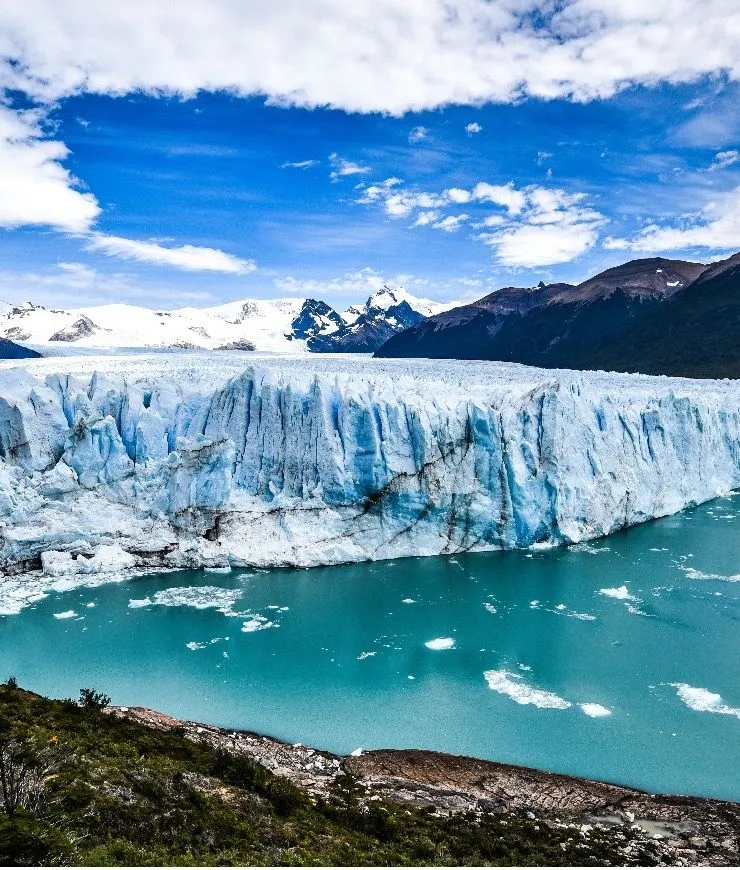
What sets Perito Moreno apart from other glaciers is its unique behavior. Unlike most glaciers, which are retreating due to climate change, Perito Moreno continues to advance, gradually pushing forward into Lake Argentino. Massive chunks of ice calve off the glacier's face and crash into the icy waters below, creating thunderous booms and towering waves.
10. Puerto Princesa Subterranean River
The Puerto Princesa Subterranean River located in the Philippines on the island of Palawan, stretches an impressive 8.2 kilometers beneath the earth's surface, making it one of the longest navigable underground rivers in the world. What sets the Puerto Princesa Subterranean River apart is its stunning limestone karst formations that adorn its cavernous chambers.
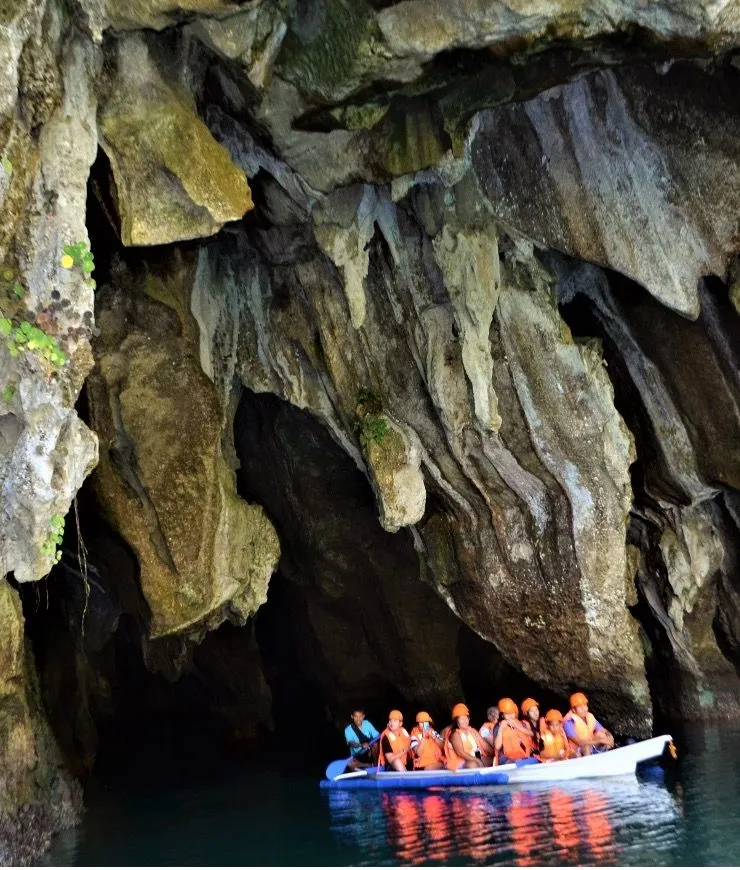
The river's crystal-clear waters wind their way through a labyrinth of limestone caves, creating a magical environment that seems straight out of a fantasy novel. Sunlight filtering through openings in the cave ceiling casts an ethereal glow on the rock formations, illuminating their intricate details and creating an otherworldly atmosphere.
11. Ha Long Bay
Ha Long Bay, situated in northern Vietnam near the Chinese border, stands as a breathtaking natural marvel. "Hạ Long" means "descending dragon" in English. Adorned with 1,600 limestone islands and islets, it sprawls across an expanse of over 1,500 square kilometers. Recognized for its uniqueness, it earned UNESCO World Heritage Site status in 1994.

Much of the bay's islands and karst limestone formations remain untouched by human presence, offering a pristine environment. For many adventurers, Ha Long Bay appears straight out of a cinematic fantasy. Beyond its visual splendor, the bay boasts diverse biodiversity and has served as the enchanting setting for numerous feature films.
12. The Wave
"The Wave" is a mesmerizing sandstone formation located on the border of Utah and Arizona, within the Paria Canyon-Vermilion Cliffs Wilderness area. This place is known for its wave-like formations, which formed from soft Navajo sandstone millions of years ago. According to scientists, ancient dunes transformed over centuries into solid rock composed of vertical and horizontal layers.
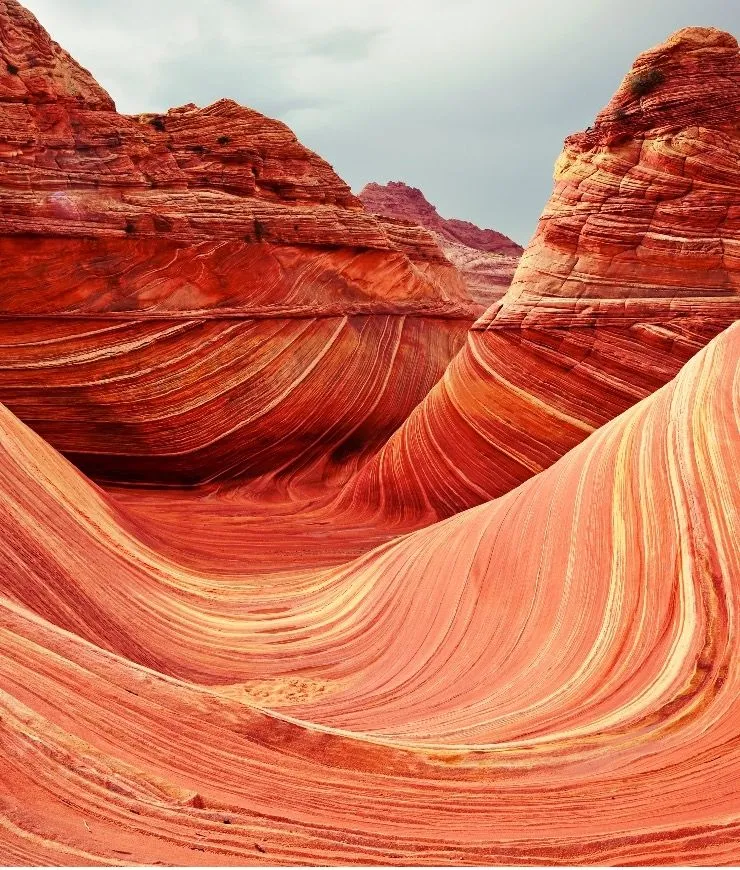
Then, wind and rain erosion created a captivating landscape that can be observed today. Getting here is possible only on foot through sands and mountains (roads are not built here to maintain the natural integrity of the ecosystem). However, not everyone can make it: due to the landscape's vulnerability, only 20 people per day with special permits can visit this remarkable place.
13. Marble Caves
Near the Chilean town of Chile Chico, located close to Argentina, lies one of the world's gems - the Marble Caves. The azure grottoes of the marble caves in Patagonia partially submerge into the heavenly turquoise waters of one of the deepest lakes on Earth - Lake Carrera. The water here is incredibly clear and possesses simply astonishing shades, ranging from emerald to soft azure.
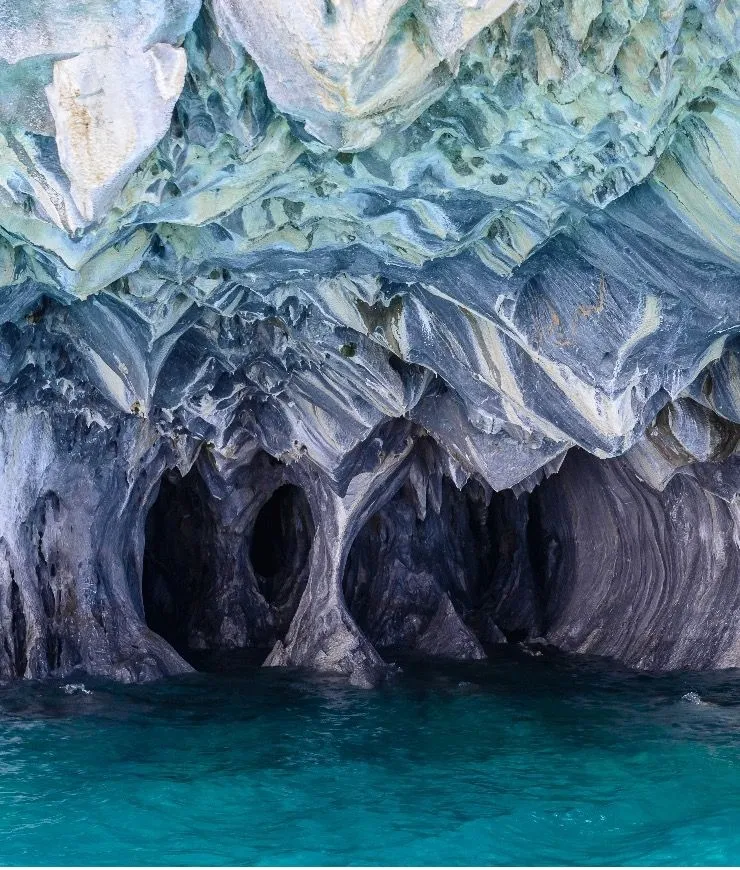
This peculiarity is attributed to the glacial origins of the lake. Residents find it belittling to call the Marble Caves "caves"; they prefer to use the word "cathedral" instead. All of them are situated on the Chilean side and consist of three main grottoes: The Cathedral, the Cave, and the Chapel. Each can be reached by boat across the lake, provided the water remains calm and tranquil.
14. Milford Sound
Milford Sound is a classic marine fjord that emerged millions of years ago, owing its existence to glaciers. These glaciers melted and generated streams, carving their way to the sea and scattering rocks and boulders. Over time, the glaciers completely melted, leaving behind deep U-shaped valleys that quickly filled with water. Thus, Milford Sound was formed.
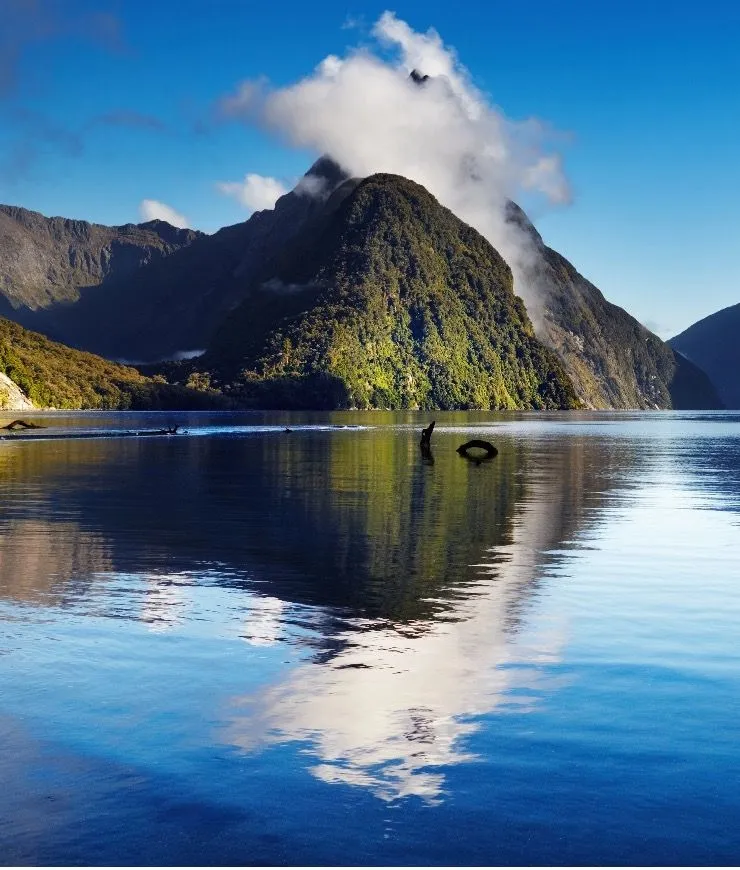
It is known that Captain Cook twice missed the entrance to Milford Sound, in 1770 and 1773, as on both occasions the passage was obscured by fog. The name for the Sound was given by John Grono, captain of a sealing vessel, who discovered the entrance to the Sound in 1822 and named it after his hometown in Wales, Milford Haven.
15. Lake Hillier
Lake Hillier is a remarkable natural phenomenon located near the western coast of the Australian mainland on Middle Island. Lake Hillier is safe for swimming, posing no danger to visitors. One of the mysteries of Lake Hillier lies in the unknown origin of its pink color. Typically, microscopic algae living in highly saline water give pink hues to salty lakes by releasing a red pigment during their life processes.
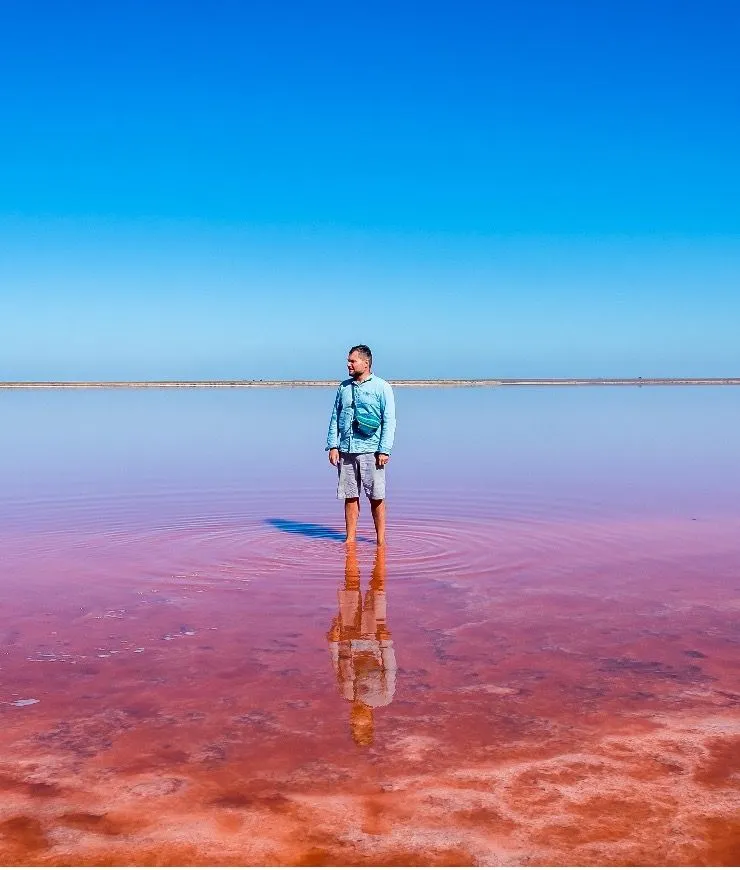
However, numerous studies have not revealed the presence of these algae in Lake Hillier. Scientists even investigated the lakebed in their search but found it to be smooth, with pebbles, and no algae were found there either. It is speculated that some unique minerals might be giving the water its pink color, although this remains only a hypothesis, unsupported by evidence. The question of why the water in Lake Hillier is pink remains open.
16. Jeita Grotto
Jeita Grotto, located in Lebanon, is a breathtaking natural wonder renowned for its stunning limestone formations and crystalline underground lakes. This cave system stretches over 9 kilometers in length and is divided into two main sections: the upper grotto and the lower grotto. The lower cave, inhabited since prehistoric times, was only discovered in 1836 by Reverend William Thompson.
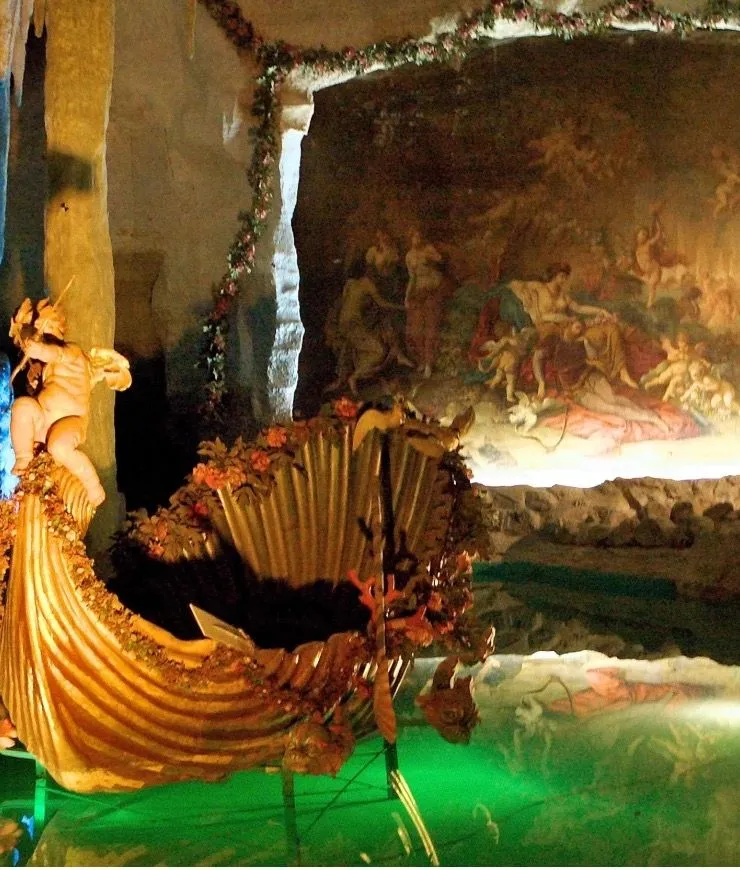
In 1958, Lebanese spelunkers discovered upper galleries located 60 meters above the lower cave. They were connected by a tunnel and a series of passages to provide tourists safe passage without disrupting the natural landscape. The galleries consist of a series of separate chambers, the largest of which reaches a height of 120 meters.
17. Pamukkale
"Pamukkale" translates from Turkish as "cotton castle." Legend has it that the snow-white mountains appeared during the time of the Titans, who harvested cotton and laid it out to dry in the sun. Left unattended, the cotton hardened and turned into stone. In reality, this natural phenomenon owes its existence to the geothermal springs found in this locality.
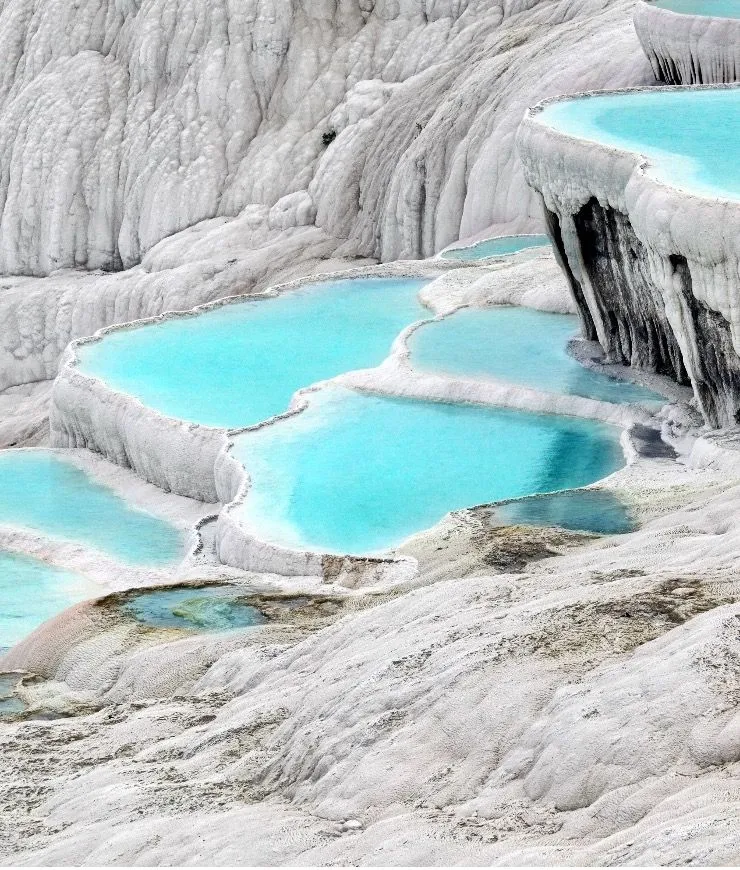
The dazzling white natural pools on the slope of Mount Chal Dagi formed over millions of years due to the precipitation of calcium carbonate contained in the water. There are a total of 17 such springs. Sediment initially accumulates in the form of a gelatinous mass at the bottom of the water body. Over time, this mass hardens, forming entire terraces of travertine.
18. Eye of the Sahara
The Eye of the Sahara, also known as the Richat Structure, is a geological marvel located in the Sahara Desert of Mauritania. This extraordinary feature is easily recognizable from space due to its distinct bull's-eye appearance, with concentric rings of alternating colors spanning approximately 50 kilometers (30 miles) in diameter.

Initially thought to be an impact crater, the Eye of the Sahara has since been determined to be a geological dome that resulted from the uplifting and erosion of sedimentary rock layers over millions of years. The layers of rock exposed in the structure provide a unique glimpse into the Earth's geological history, with some dating back over 100 million years.
19. Serrania de Hornocal
Serranía de Hornocal is renowned for its vibrant and contrasting hues, which create a breathtaking display of colors that seem almost surreal against the backdrop of the Andean mountains. Serranía de Hornocal, also known as the "Hill of Seven Colors," is approximately 75 million years old. It is said to exhibit seven colors, although most people can only distinguish four shades.
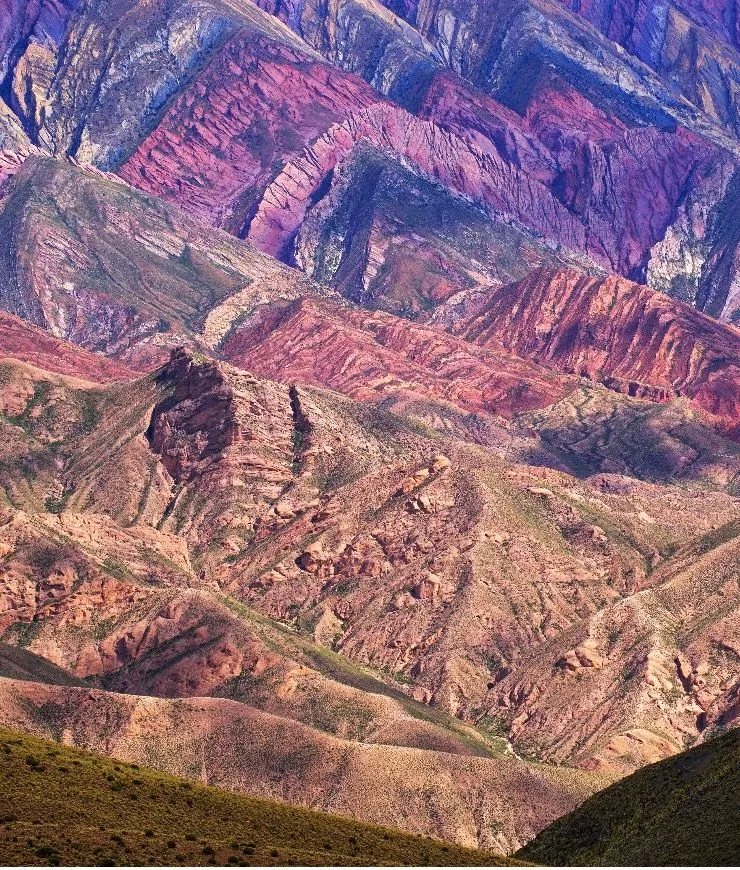
The unique coloration of Serranía de Hornocal is the result of various mineral deposits that have accumulated over millions of years. Different minerals, such as iron, copper, sulfur, and lead, have oxidized and weathered at different rates, resulting in the striking palette of reds, greens, yellows, and purples that adorn the mountainside.
20. Abraham Lake
Abraham Lake is a man-made reservoir created during the construction of a dam in the 1970s. The reservoir is significant in size, spanning 32 by 3.3 kilometers, and boasts the typical blue waters characteristic of Canadian glacial lakes. Tourists and photographers are particularly drawn to the extraordinary patterns that form beneath the water's surface during winter.
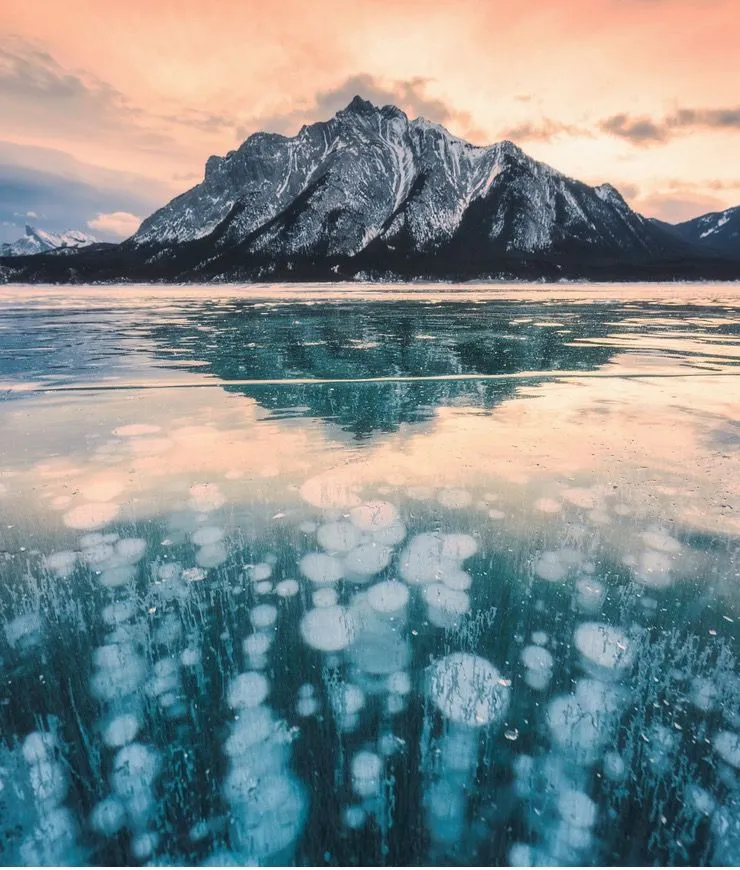
The reason behind this natural phenomenon is quite simple: methane bubbles rise from the lake bottom to the already frozen ice surface. These bubbles freeze at various depths, creating an unusual visual effect. Throughout the winter, methane is produced by plants growing on the lake bottom.
21. Zhangye Danxia
Zhangye Danxia Landform Geological Park, located in Gansu Province, China, is a stunning geological wonder that resembles a painting coming to life. This unique landscape features a mesmerizing display of colorful rock formations, characterized by vibrant hues of red, orange, yellow, and green, which stretch across the rolling hills and valleys of the region.
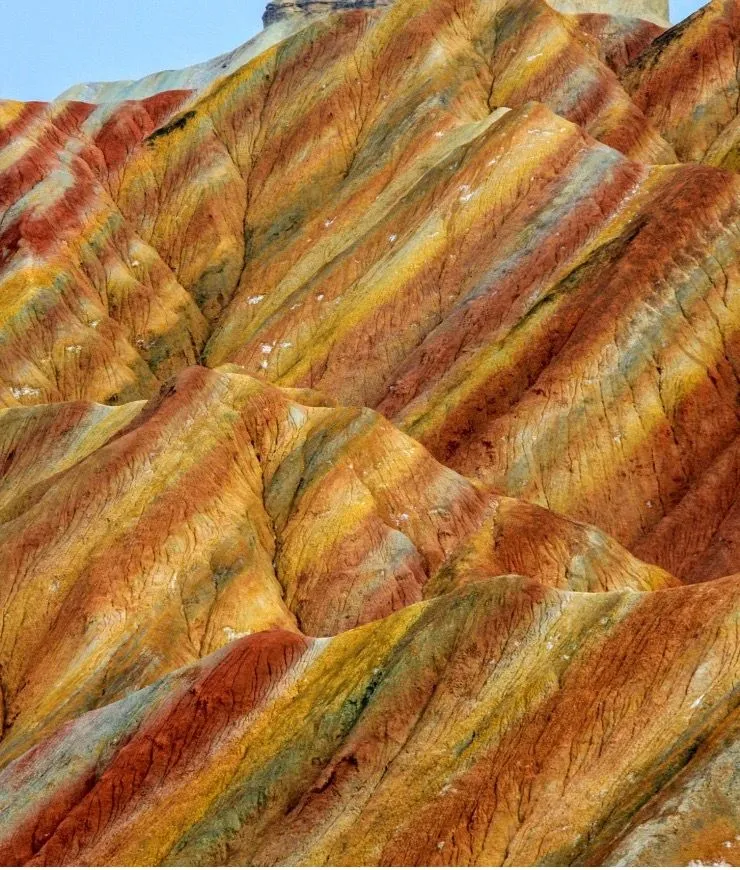
These striking formations were created over millions of years through the process of erosion and weathering, resulting in layers of sedimentary rock being exposed to the elements. The diverse colors of the rocks are attributed to the varying mineral compositions and geological conditions present in the area.
22. White Sands
In the south-central part of New Mexico, west of Alamogordo, are located the world's largest gypsum sand dunes. Shining white sand dunes cover an area of almost 230 square miles, with many dunes rising over 60 feet. The optimal time to explore the dunes is during a mild winter day. At this time, there are few tourists here, although it is no less interesting to spend time in this area.
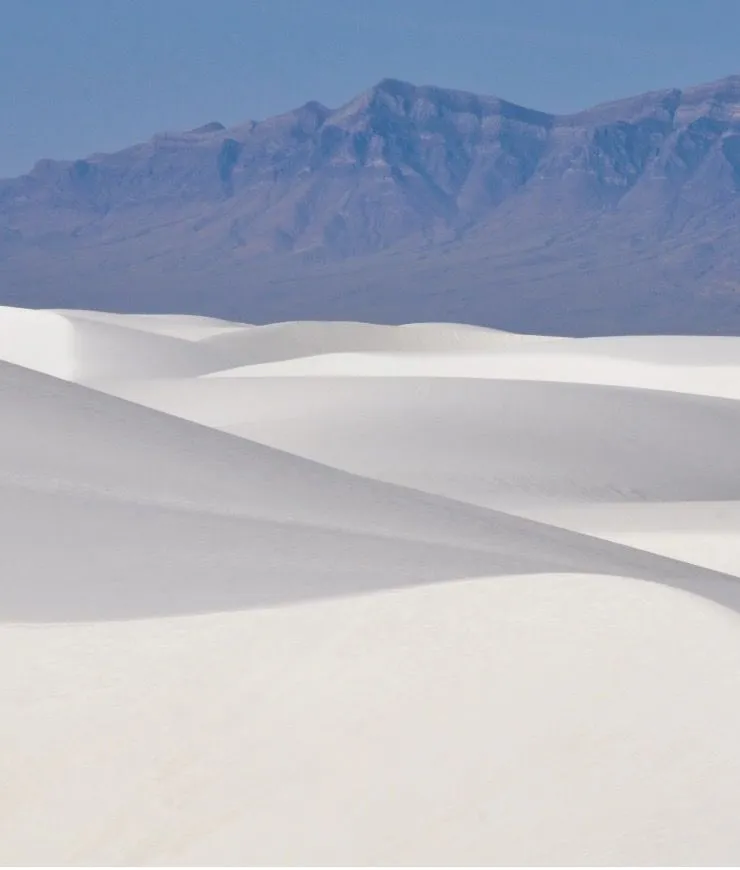
The dunes also seem to attract visitors from very, very far away; while the National Park and officials will vehemently deny their existence. Hundreds of UFO sightings have been reported at White Sands over the past 30 years. The dunes have been a magical spot for sightings and searches by Native Americans from across the Southwest and northern Mexico.
23. Bryce Canyon
Bryce Canyon is a unique stone city created by water and wind over millions of years. A series of architectural ensembles made of multicolored sandstone are located in several huge bowl-shaped amphitheaters, densely packed with towers, spires, temples, and minarets of red, orange, pink, and cream shades. Morning and evening are the best times to admire this marvel.
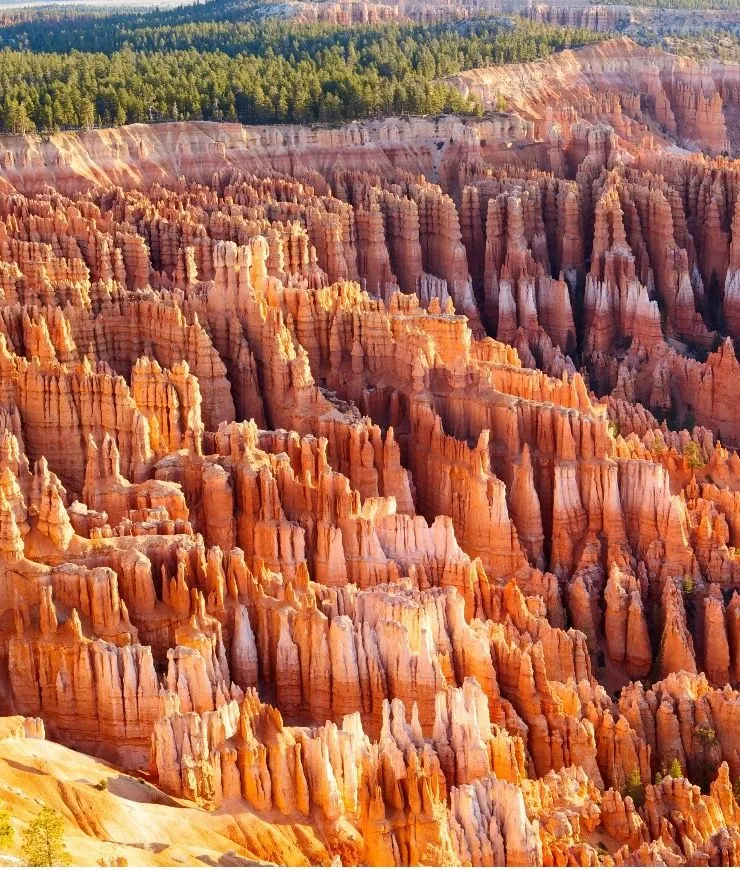
Bryce Canyon in the USA began to form over 40 million years ago when an ancient sea covered the area. Another 20 million years passed, and the sea dried up. Deposits of rocks that were at the bottom of the sea formed a series of rocky outcrops through the cracking of tectonic plates. Thus, the canyon itself began to take shape, while the tops of the Huda were covered with limestone rocks.
24. Blue Lagoon
The pride of Iceland and one of its national symbols is the Blue Lagoon. This absolutely unique geothermal lake is located on the Reykjanes Peninsula in the southwest part of Iceland. The size of the lake is approximately 200 meters wide and several kilometers long. The water temperature in it remains at +37°C throughout the year.
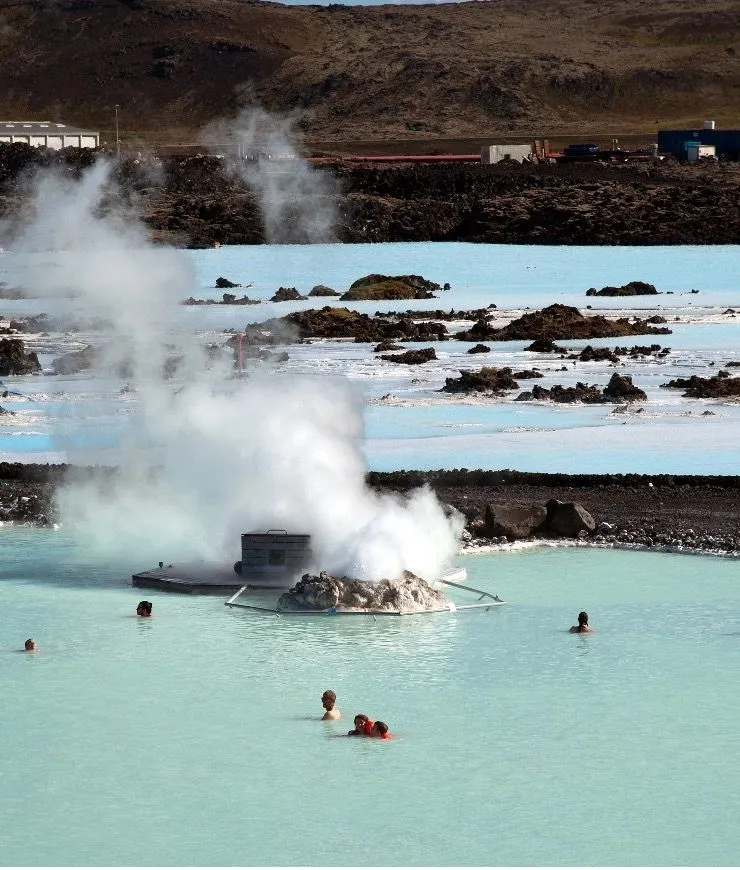
The bottom of the lagoon is covered with black basaltic sand and silica, forming a soft white mud. It emerged in the 1970s to 1990s on the site of the world's first geothermal power plant, which supplied electricity to Reykjavik. Operating as a resort since 1992, it attracts approximately 300,000 tourists annually.
25. Antelope Canyon
Antelope Canyon is a true wonder created only by the mighty forces of nature. Sandstone rocks, carved by water and wind over millions of years, form whimsical fissures that delve dozens of meters deep, painted in hues of red and orange. It is precisely this combination of colors, resembling the skin of an antelope, that gave the canyon its name.
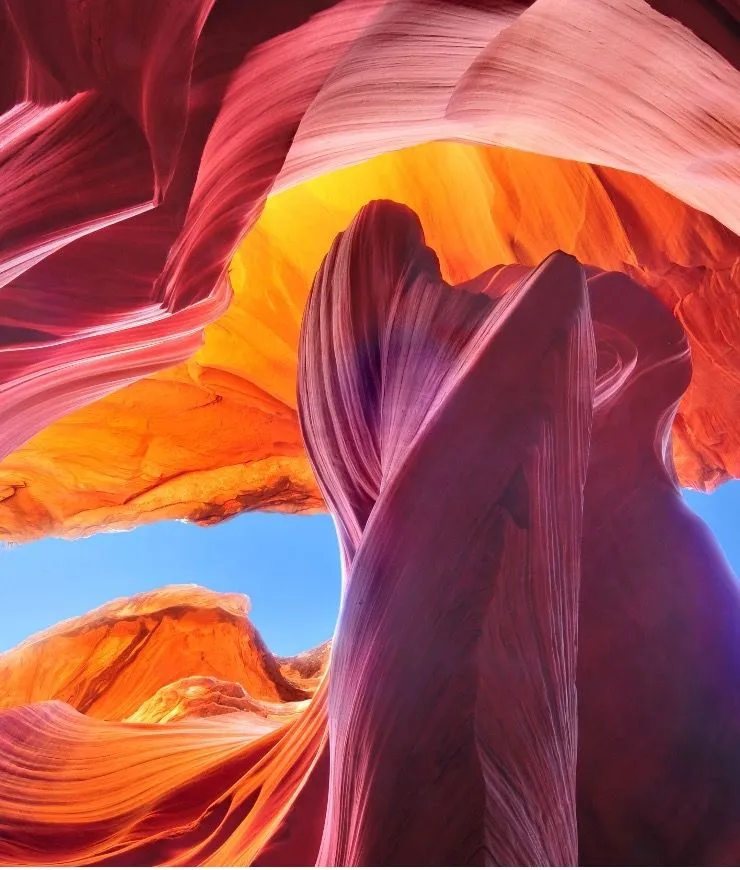
Descending into Antelope Canyon even during a slight rain is strictly prohibited due to the high risk of flash floods. Water can inundate the narrow passages within minutes, making it nearly impossible to escape. In 1997, a group of 12 tourists was swept away by a sudden surge of water in Lower Antelope Canyon. Only one of them managed to survive.
26. Angel Oak
The Angel Oak is a magnificent Southern live oak that grows near Charleston, South Carolina, USA. Estimates suggest that this iconic tree is between 400 and 500 years old, making it one of the oldest living organisms in the United States. The Angel Oak stands out for its size and majestic canopy, which spans over 17,000 square feet.
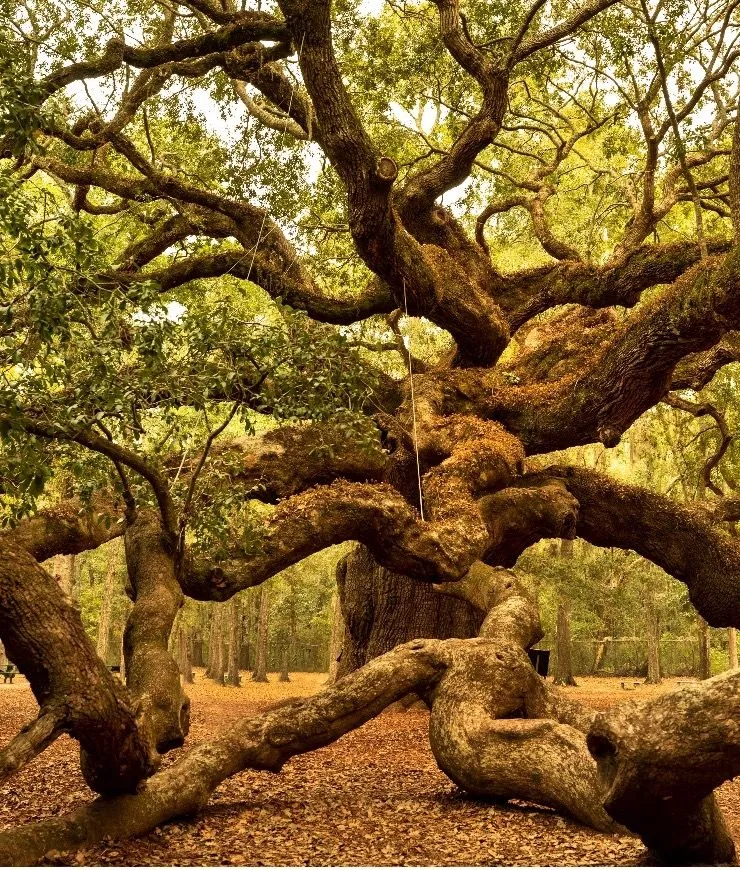
The Angel Oak's name is shrouded in mystery and folklore, with various legends attributing its moniker to angelic appearances witnessed beneath its expansive branches or to former property owners named Angel. Regardless of its origins, the Angel Oak has become a beloved symbol of resilience, strength, and natural beauty in the Lowcountry of South Carolina.
27. Hoh Rain Forest
The Hoh Rainforest, located in Olympic National Park in the state of Washington, USA, attracts visitors from around the world. What makes the Hoh Rainforest unique is its designation as one of the few temperate rainforests in the Northern Hemisphere, characterized by its lush greenery, towering trees, and abundant biodiversity.

This enchanting forest receives an average annual rainfall of over 140 inches (or about 3.5 meters), contributing to its lush and vibrant ecosystem. The rainfall, combined with the temperate climate of the region, fosters the growth of towering Sitka spruce, Douglas fir, western hemlock, and red cedar trees, some of which reach heights of over 250 feet and diameters of 7 feet.
28. Hierve el Agua
Hierve el Agua, which translates to "the water boils" in Spanish, is a remarkable natural wonder located in the state of Oaxaca, Mexico. It is a set of stunning rock formations that resemble cascading waterfalls, but with a unique twist—they are actually petrified mineral deposits formed over thousands of years.
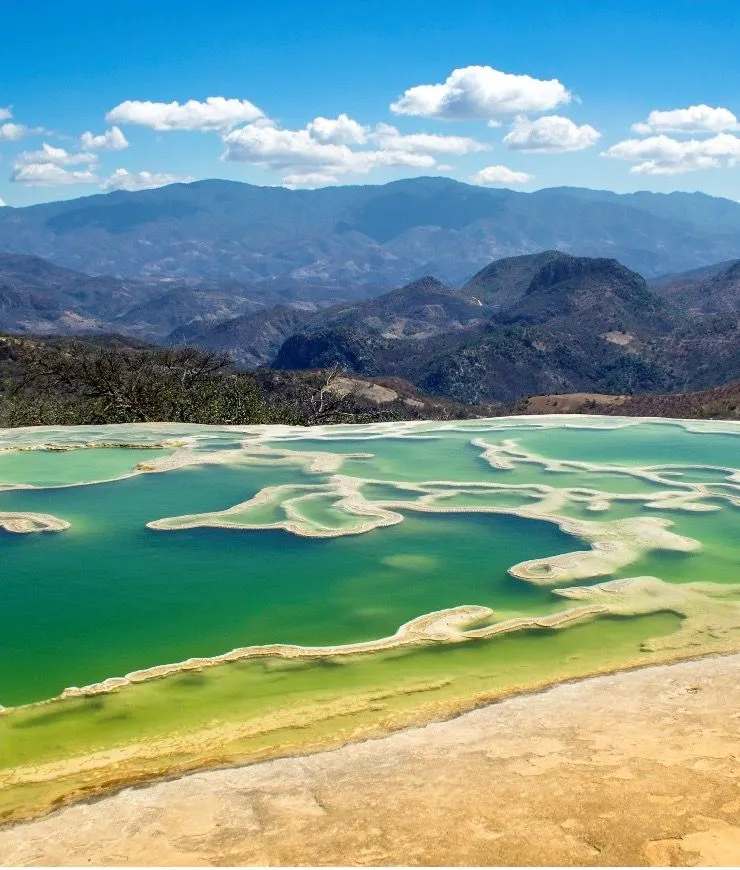
What makes Hierve el Agua truly fascinating is its appearance, which gives the illusion of flowing water frozen in time. These "petrified waterfalls" were created by mineral-rich spring water that slowly flowed over the cliff edges, leaving behind layers of calcium carbonate and other minerals. Over time, these deposits built up and solidified, creating dramatic formations.
29. Cenotes
Cenotes are captivating natural formations found primarily in the Yucatán Peninsula of Mexico, although they can also be found in other parts of the world such as Belize and parts of Central America. These geological wonders are essentially sinkholes or natural pits formed by the collapse of limestone bedrock, exposing groundwater underneath.
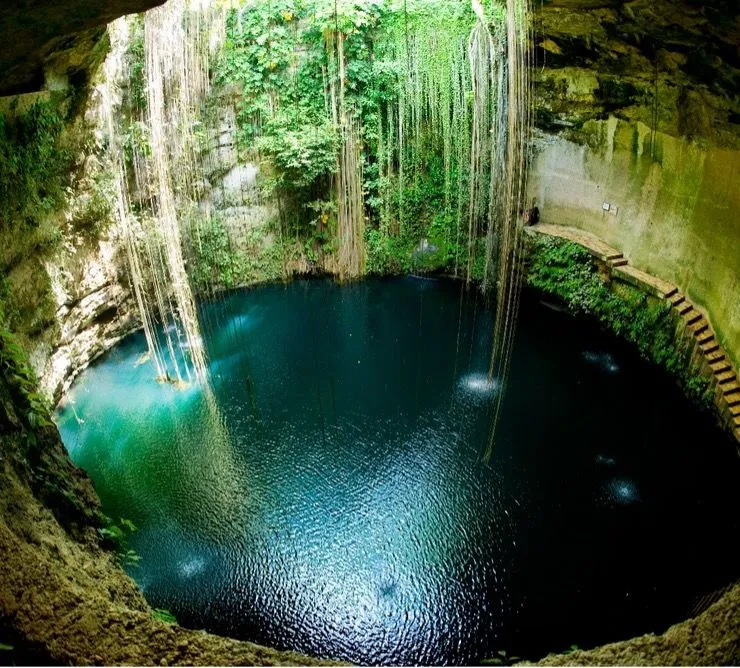
What makes cenotes truly remarkable is their crystal-clear, turquoise waters, often with underwater caves, stalactites, and stalagmites. They were considered sacred by the ancient Maya civilization, who believed them to be portals to the underworld. Cenotes were essential water sources for the Maya, providing access to freshwater in the otherwise dry landscape of the Yucatán Peninsula.
30. Barrier Reef
The Belize Barrier Reef is the second-largest coral reef system in the world after the Great Barrier Reef in Australia and the longest continuous reef system in the Western Hemisphere. The Belize Barrier Reef consists of a group of reefs that stretch along the Yucatán Peninsula, including most of the coastline of the Central American country of Belize.

Amidst the greenish-blue waters, a dark blue "sinkhole" adorned with living corals is visible. It is called the Blue Hole. This is one of the most beautiful places for underwater swimming, protected by the World Heritage Convention. However, divers should be cautious as sharks like to swim here. Moreover, divers should remember the phenomenon of decompression.
31. The Azores
The Azores - a unique place in terms of climate. It is located at 38 degrees latitude, which is quite northern, yet the temperature in winter on the streets reaches +15°C. There is never any snow or frost here. The secret of such a climate lies in the warm Gulf Stream current, which passes through the archipelago and warms the ocean. In the city of Horta on the island of Faial, there is a conveniently located bay.
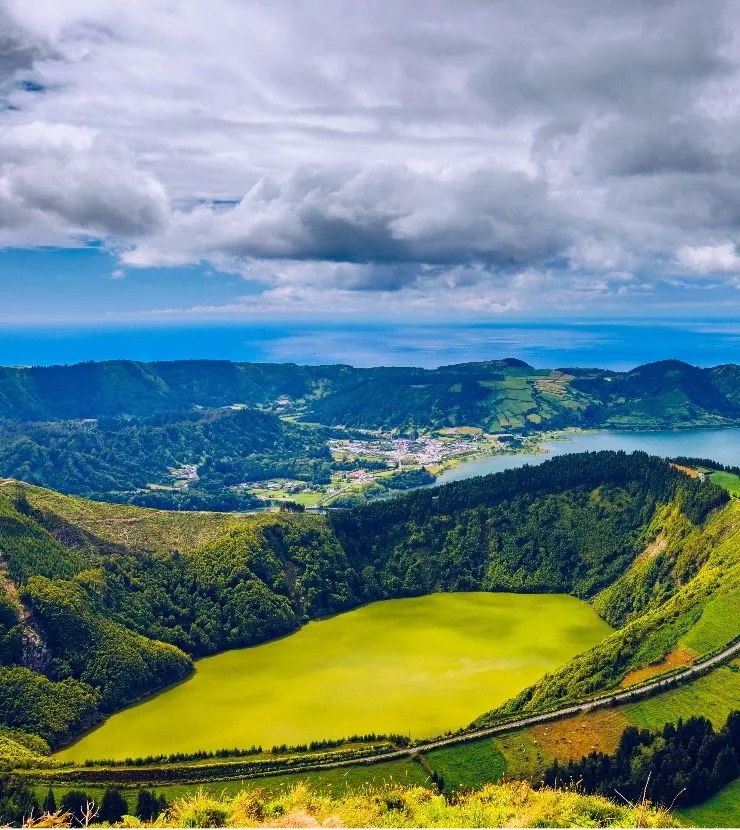
In the bay, there is one of the most visited marinas in the world and a place where all sailors meet when crossing the Atlantic. Throughout its existence, the marina has acquired several interesting traditions. One of them: every yacht that enters here must leave a drawing as a memento. There are no fewer than 10,000 drawings formed here over time.
32. Arashiyama Bamboo Grove
The picturesque bamboo forest with thousands of tall evergreen trees is the hallmark of Kyoto Prefecture. Amidst the urban infrastructure, it's strange to see such a green marvel. The straight trunks of the Sagano forest cover an area of 16 square kilometers. The protected area of Arashiyama tourist district is under UNESCO protection.

In Japan, it is believed that bamboo protects against evil spirits, so many temples are surrounded by bamboo stalks. Baskets, boxes, and some utensils are woven from bamboo. Bamboo is a very resilient plant. It is said that many buildings constructed from this plant can withstand earthquakes of up to 9 on the Richter scale.
33. Komodo Island
Komodo Island, located in Indonesia, is renowned for its stunning natural beauty and unique inhabitants, particularly the Komodo dragons, the largest lizards on Earth. These fascinating creatures are endemic to the island and draw adventurers and wildlife enthusiasts from around the globe. One of the most captivating attractions on Komodo Island is its Pink Beach.
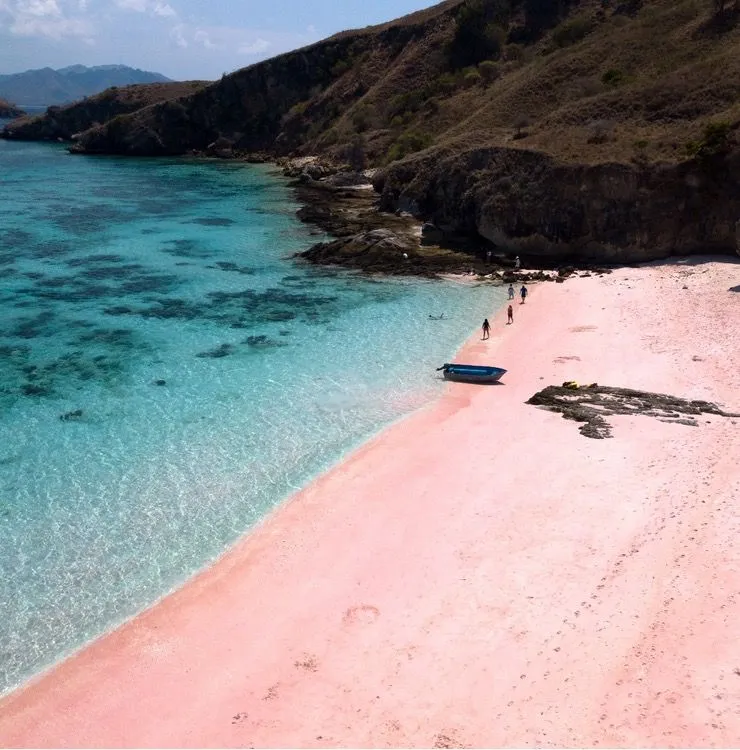
This extraordinary beach gets its distinctive hue from tiny red organisms called foraminifera, which thrive in the coral reefs surrounding the island. When these organisms die, their red pigments blend with the white sand, resulting in the beach's pinkish hue. Visitors to Pink Beach are treated to a mesmerizing sight as they soak in the sun.
34. Spotted Lake
Spotted Lake is one of the most unique lakes on the planet, located in British Columbia, Canada. In spring and winter, Kliluk Lake appears to be a regular lake, but it begins to exhibit its unique appearance during the hot summer months. During this period, the lake's surface is adorned with numerous spots of various shapes and colors.
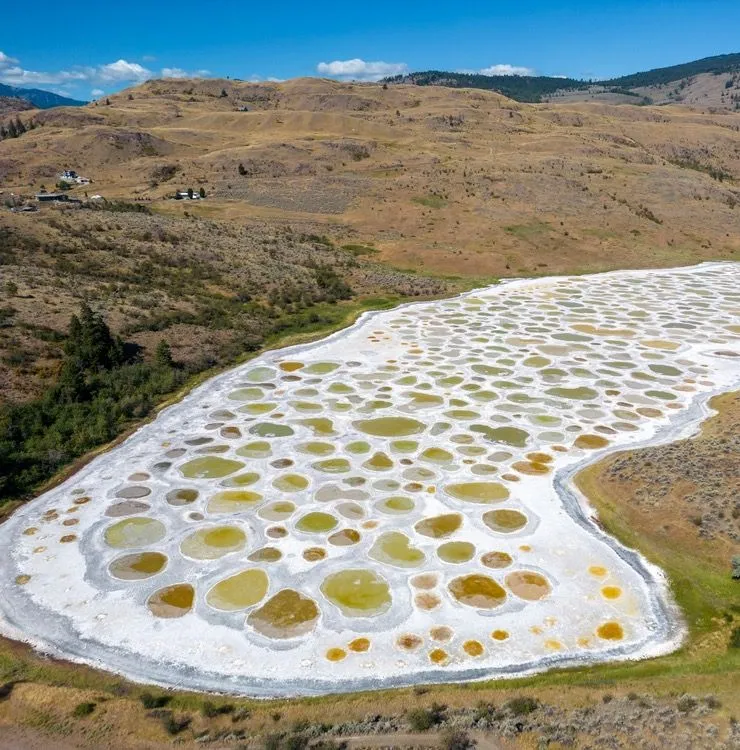
The water boasts the world's highest concentration of magnesium sulfate, calcium, and sodium, as well as silver and titanium. Therefore, it is not suitable for drinking, there are no fish in it, and swimming in Spotted Lake is prohibited. Local indigenous peoples are known to use the lake's mud in pottery making, and during World War I, its valuable minerals were extracted for ammunition production.
35. The Stone Forest
In southwestern China lies a unique place known as the Stone Forest. The Stone Forest formed over 200 million years ago. Previously, this area was covered by the sea, and thick layers of limestone sediment accumulated. However, due to tectonic movements, the rocks emerged to the surface. Over the years, water and wind have sculpted these rocks into increasingly refined shapes.
 @LadySIipper/reddit.com
@LadySIipper/reddit.com
According to legend, the Stone Forest appeared thanks to a giant warrior who desperately wanted to build a dam for his people. At night, he began moving huge stones using tools stolen from a local wizard. However, when the sun rose, the magical power of the tools disappeared, and the stones remained scattered across the valley.
36. Blood Falls
Blood Falls, located in Antarctica's McMurdo Dry Valleys, is a natural wonder that captivates scientists and visitors alike. This peculiar phenomenon derives its name from the striking resemblance of its water to blood, with its deep crimson hue contrasting starkly against the pristine white landscape of the icy continent. The source of this vivid red water is a subglacial lake trapped beneath the Taylor Glacier for millions of years.
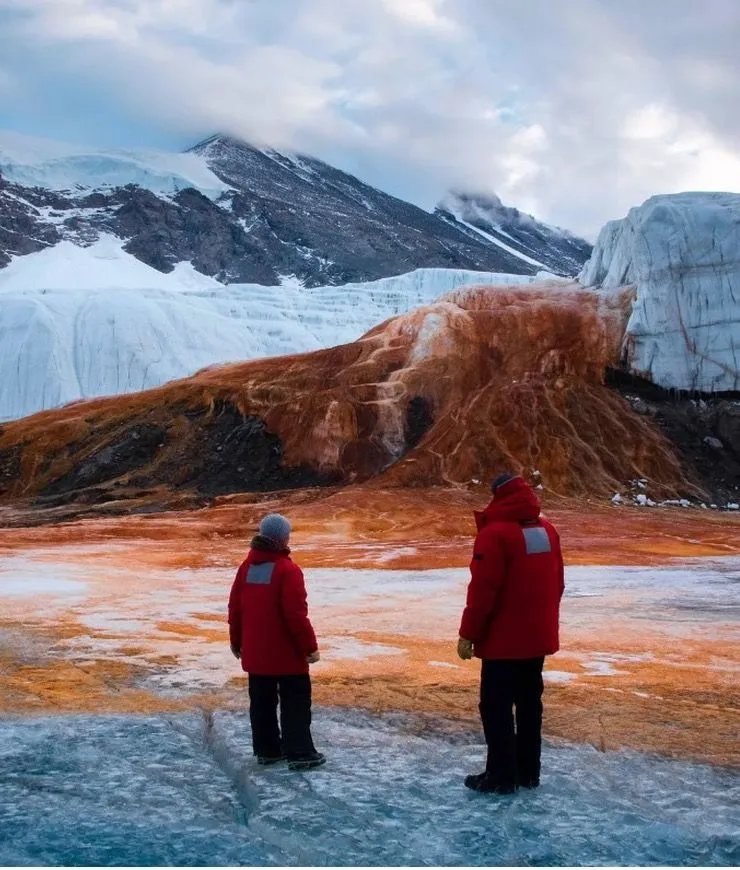 @ ForeignerXXF571/reddit.com
@ ForeignerXXF571/reddit.com
The water contains a high concentration of iron, which oxidizes upon contact with the air, giving it its distinctive color. Remarkably, despite its extreme cold and darkness, this subglacial lake sustains microbial life. These hardy microorganisms have adapted to survive in this harsh environment, thriving on the iron and sulfur compounds present in the water.
37. The Cave of the Crystals
The Cave of the Crystals is famous for its extraordinary giant gypsum crystals. The cave was accidentally discovered in 2000 by miners excavating a tunnel for the Naica Mine. As they pumped out the water from the mine, they uncovered this hidden subterranean chamber, revealing an otherworldly spectacle of immense crystal formations.
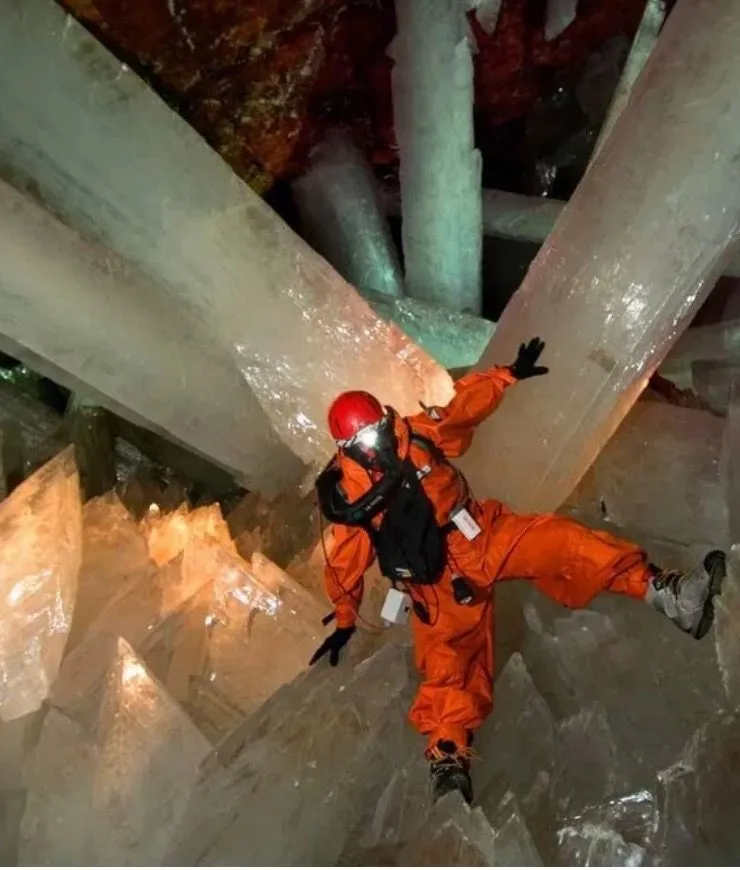 @[deleted]/reddit.com
@[deleted]/reddit.com
The crystals discovered within the cave can attain remarkable dimensions, with certain specimens surpassing 39 feet (12 meters) in length and weighing several tons. These crystals formed under extremely rare and specific conditions: a combination of high temperatures, saturated mineral-rich water, and a stable geological environment over millions of years.
38. Devils Marbles
The Devils Marbles, also known as Karlu Karlu, the natural wonder consists of massive granite boulders scattered across a vast desert landscape, creating a surreal and otherworldly spectacle. What makes the Devils Marbles so intriguing is not just their sheer size and quantity, but also their peculiar shapes and formations.
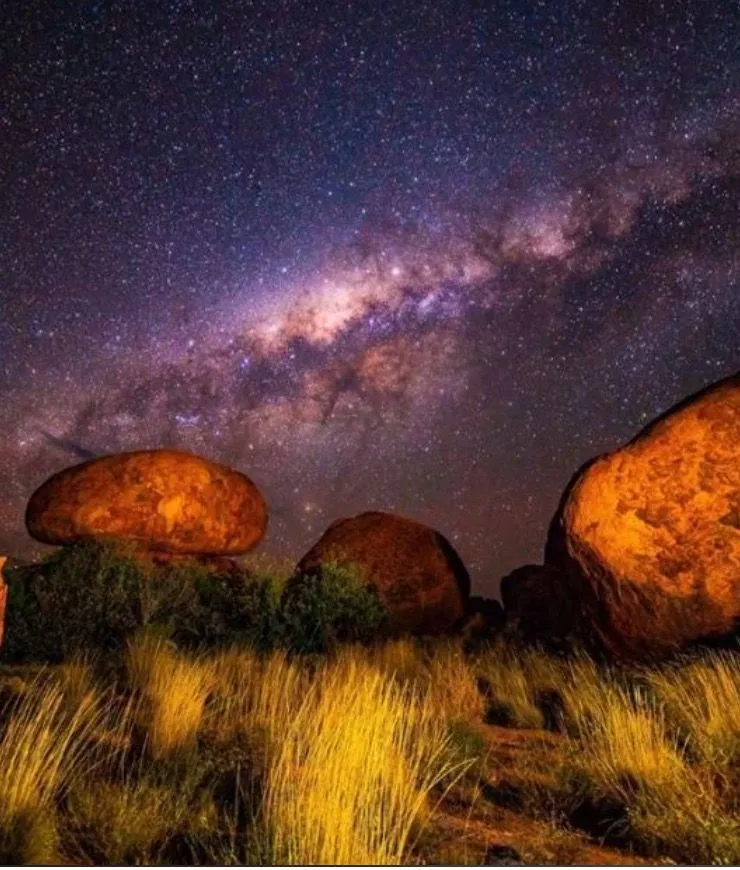 @HellsJuggernaut/reddit.com
@HellsJuggernaut/reddit.com
Some of these boulders are precariously balanced atop one another, seemingly defying gravity and logic. Over millions of years, erosion and weathering have sculpted these rocks into a variety of shapes, from rounded orbs to elongated forms, creating a visually striking and almost alien landscape.
39. Waitomo Glowworm Caves
The Waitomo Caves are truly a masterpiece of nature, over which it has worked for many millions of years. For centuries, the ocean ruled here, creating whimsical limestone formations and mysterious intricate networks of passages. Then the water receded, forming a system of about 150 caves. The caves are located on the North Island of New Zealand.
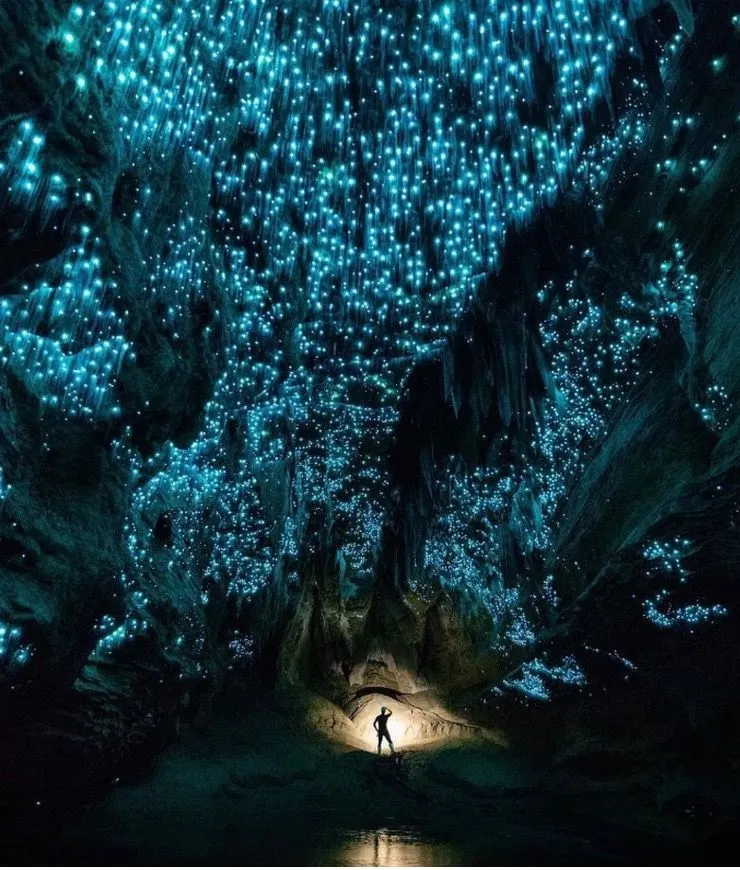 @sh0tgunben/reddit.com
@sh0tgunben/reddit.com
The most famous of them is the Glowworm Cave. It is inhabited by extraordinary creatures - Arachnocampa Luminosa. These are glowworms that can only be found in New Zealand. Their greenish-blue luminescence makes the cave ceiling resemble a starry sky on a frosty night. It's truly better to see it once...
40. Socotra Archipelago
The Socotra Archipelago, often referred to as the "Galápagos of the Indian Ocean," is a remote and enigmatic group of islands located off the coast of Yemen. Renowned for its unique and otherworldly landscape, Socotra captivates travelers with its surreal beauty and extraordinary biodiversity. One of the most striking features of Socotra is its alien-like flora.
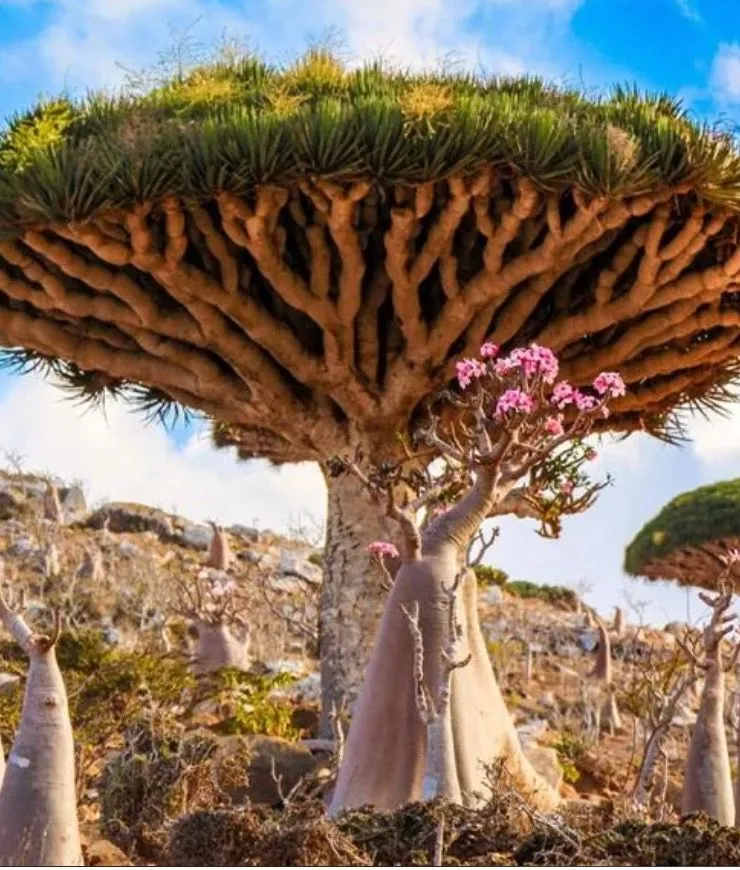 @Heliopolis1992/reddit.com
@Heliopolis1992/reddit.com
There are over 700 endemic species found nowhere else on Earth. The iconic Dragon's Blood Tree, with its umbrella-like canopy and blood-red resin, is perhaps the most emblematic plant of the archipelago. Socotra's flora has evolved over millions of years in isolation, adapting to the harsh desert environment and creating a botanical paradise unlike any other.
41. Wineglass Bay
Wineglass Bay, is nestled within Freycinet National Park on the east coast of Tasmania, Australia. Named for its distinctive shape resembling a wine glass when viewed from above, this crescent-shaped bay boasts pristine white sandy beaches, crystal-clear turquoise waters, and dramatic granite cliffs, creating a moment of incomparable serenity and breathtaking natural beauty.
 @thegooddocgonzo/reddit.com
@thegooddocgonzo/reddit.com
Wineglass Bay and the surrounding area hold cultural significance for the Tasmanian Aboriginal people, who have inhabited the region for thousands of years. The area is part of the traditional lands of the Tasmanian Aboriginal people, and its cultural heritage is preserved and celebrated.
42. Kati Thanda-Lake Eyre
Stretching across the arid landscape of South Australia, Kati Thanda-Lake Eyre is a study in contrasts. In times of drought, its vast salt flats shimmer under the intense Outback sun, creating an otherworldly landscape of blinding white expanses. Yet, when the rains come, this desolate salt pan is transformed into a thriving ecosystem, teeming with life and activity.
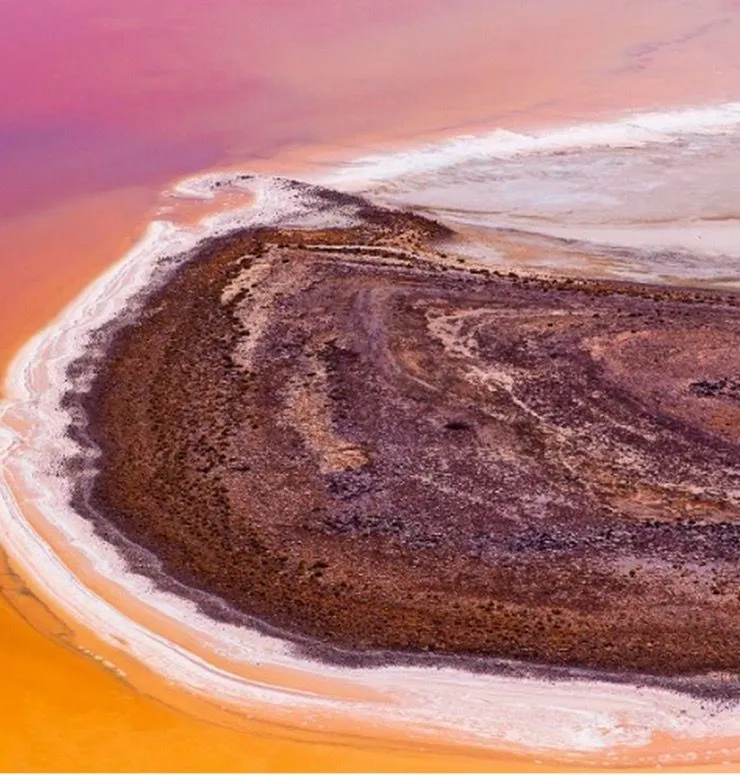 @Rare rain transforms Australia’s Kati Thanda-Lake Eyre into dazzling rainbow/edition.cnn.com
@Rare rain transforms Australia’s Kati Thanda-Lake Eyre into dazzling rainbow/edition.cnn.com
During rare periods of flooding, Kati Thanda-Lake Eyre becomes a temporary inland sea, filling with water and attracting a breathtaking array of wildlife. Flocks of waterbirds descend upon its shores, turning the lake into a vibrant tapestry of color and movement as pelicans, terns, and other avian species take advantage of the abundant food and nesting opportunities.
43. Umpherston Sinkhole
Nestled amidst the lush greenery of Mount Gambier in South Australia lies a hidden gem of natural beauty and tranquility: the Umpherston Sinkhole. This captivating geological wonder, also known as the Sunken Garden, is a testament to the remarkable forces of nature and human ingenuity, offering visitors a serene oasis amidst the rugged landscape.
 @South Australia/facebook.com
@South Australia/facebook.com
Formed thousands of years ago through the collapse of a limestone cave, the Umpherston Sinkhole is now a sunken garden of unparalleled beauty. As visitors descend into its depths, they are greeted by a lush oasis of ferns, shrubs, and colorful flowers, all thriving within the cool, shaded confines of the sinkhole.
44. Simpson Desert
The Simpson Desert is this vast sea of red sand dunes, ancient salt lakes, and sparse vegetation is one of the driest and most inhospitable regions on Earth. Named after the intrepid explorer, Alfred Allen Simpson, who traversed its unforgiving terrain in the late 19th century, the Simpson Desert covers an area of over 176,000 square kilometers (68,000 square miles).
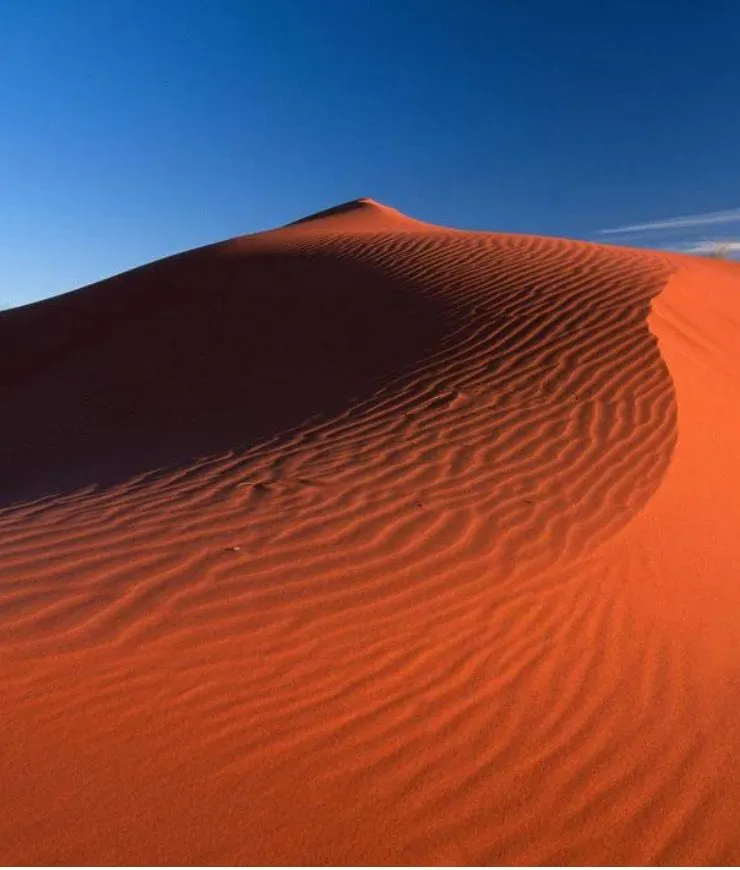 @MysteryDrawer/reddit.com
@MysteryDrawer/reddit.com
Despite its harsh and inhospitable environment, the Simpson Desert is home to a surprising diversity of flora and fauna, adapted to survive in this extreme environment. Spinifex grasses, acacia shrubs, and hardy desert plants dot the landscape, providing essential habitat and sustenance for a variety of wildlife, including red kangaroos, dingoes, and a myriad of reptiles and bird species.
45. Maria Island
Originally known as "Van Diemen's Land," Maria Island has a storied past dating back to the early days of European settlement in Australia. In the 19th century, it served as a convict station and later as a probation station, leaving behind a legacy of historic buildings and ruins that dot the landscape. Today, these remnants offer a fascinating glimpse into the island's convict history.
 @StephenKolomyjec/reddit.com
@StephenKolomyjec/reddit.com
One of the most iconic features of Maria Island is its stunning coastline, which boasts pristine beaches, towering sea cliffs, and hidden coves waiting to be explored. The island's crystal-clear waters are perfect for swimming, snorkeling, and diving, offering glimpses of vibrant marine life and colorful coral reefs beneath the surface.
46. Saturnia Hot Springs
The Italian Saturnia Hot Springs owe their existence to the thermal activity beneath the earth's surface, which heats the mineral-rich waters to a comfortable temperature year-round. As the waters bubble to the surface, they form a series of cascading pools and natural waterfalls, creating a tranquil oasis amidst the rolling hills and verdant landscapes of Tuscany.
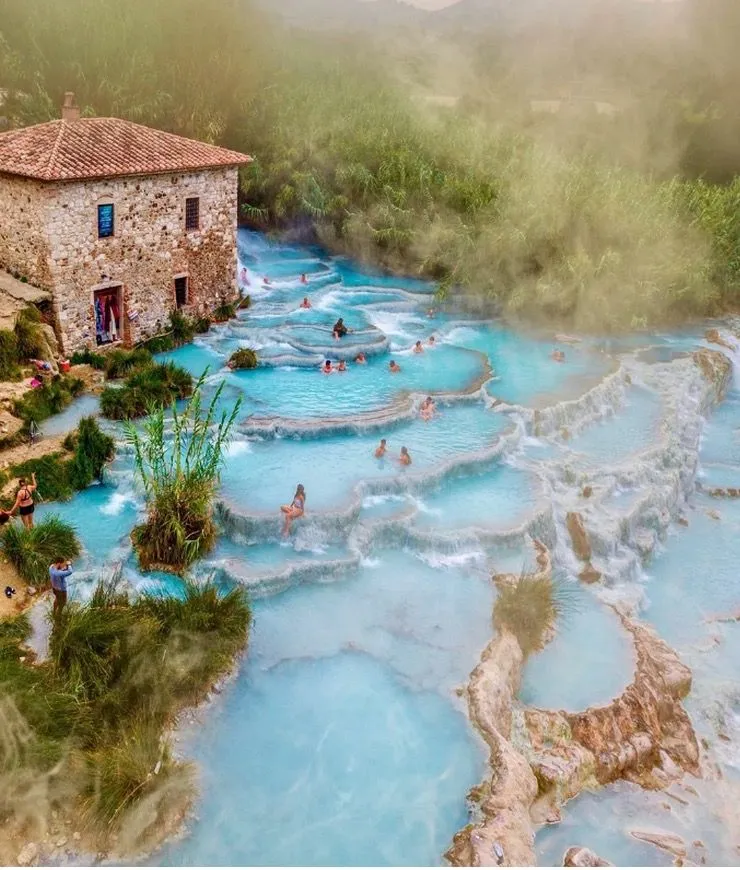 @CryptoExodus/reddit.com
@CryptoExodus/reddit.com
What sets the Saturnia Hot Springs apart from other thermal springs around the world is the unique composition of the water itself. Rich in sulfur, bicarbonate, and other minerals, the waters of Saturnia are believed to possess a range of therapeutic properties, including easing muscle tension, improving circulation, and promoting overall well-being.
47. Zabriskie Point
One of the most striking features of Zabriskie Point is the array of colors that adorn the rocks, ranging from vibrant hues of red and orange to softer shades of pink and yellow. These colors, created by the presence of minerals such as iron oxide and manganese, lend an otherworldly quality to the landscape, particularly during the golden hours of sunrise and sunset.
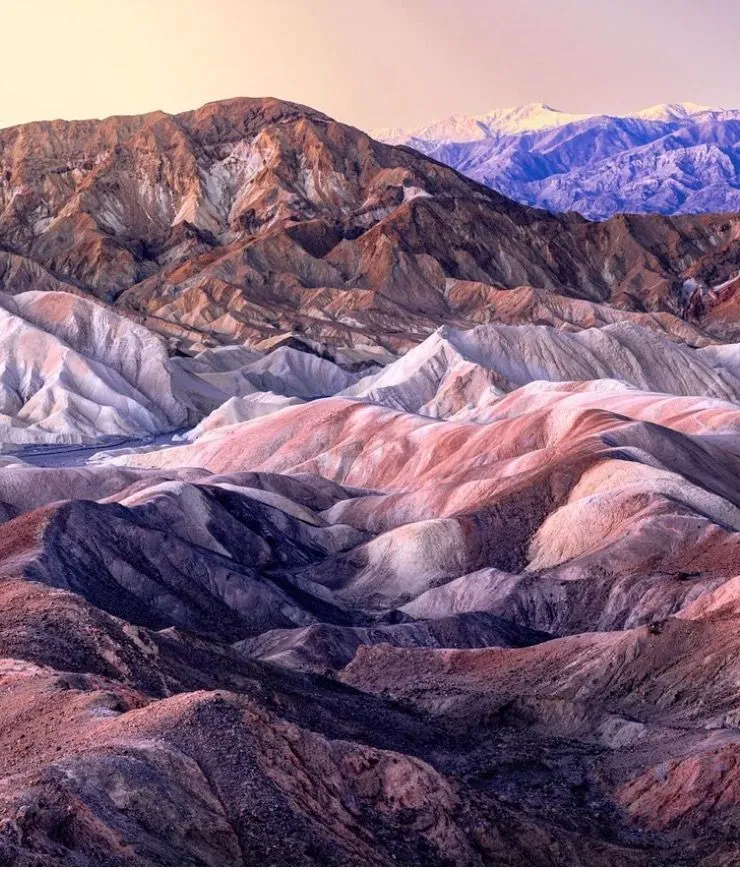 @A_Pungent_Wind/reddit.com
@A_Pungent_Wind/reddit.com
In the late 1960s, Italian director Michelangelo Antonioni chose Zabriskie Point as the setting for his film of the same name. The movie, which explores themes of counterculture, rebellion, and the American Dream, features stunning cinematography that showcases the otherworldly beauty of Death Valley, with Zabriskie Point serving as a central location.
48. Fingal’s Cave
Fingal's Cave is a magnificent sea cave, with towering basalt columns and an eerie, cathedral-like interior. Legend has it that Fingal's Cave was formed by the giant Finn McCool, a mythical figure from Irish and Scottish folklore. He built the cave as a shelter from the elements, using his mighty strength to carve out the towering columns and intricate archways that characterize its interior.
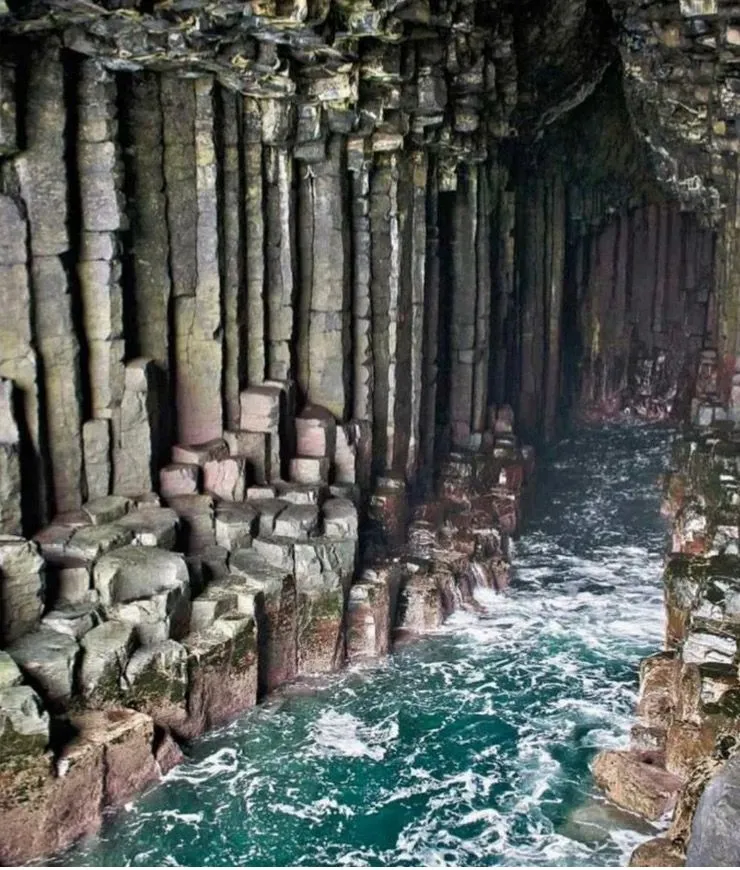 @Dhorlin/reddit.com
@Dhorlin/reddit.com
Stepping into Fingal's Cave is like entering another world. The cave's hexagonal basalt columns, formed by the cooling of lava flows millions of years ago, create a mesmerizing pattern of geometric shapes. As the waves crash against the rocky shores outside, they reverberate through the cave's chamber, creating a hauntingly beautiful symphony of sound that echoes off the walls and ceiling.
49. Danakil Depression
Tucked away in the northeastern corner of Ethiopia lies a place unlike any other on Earth—the Danakil Depression. This remote and desolate region, often referred to as the "gateway to Hell," is a land of extremes, where scorching temperatures, barren salt flats, and colorful mineral deposits create a landscape that seems more akin to a distant planet than to our own.
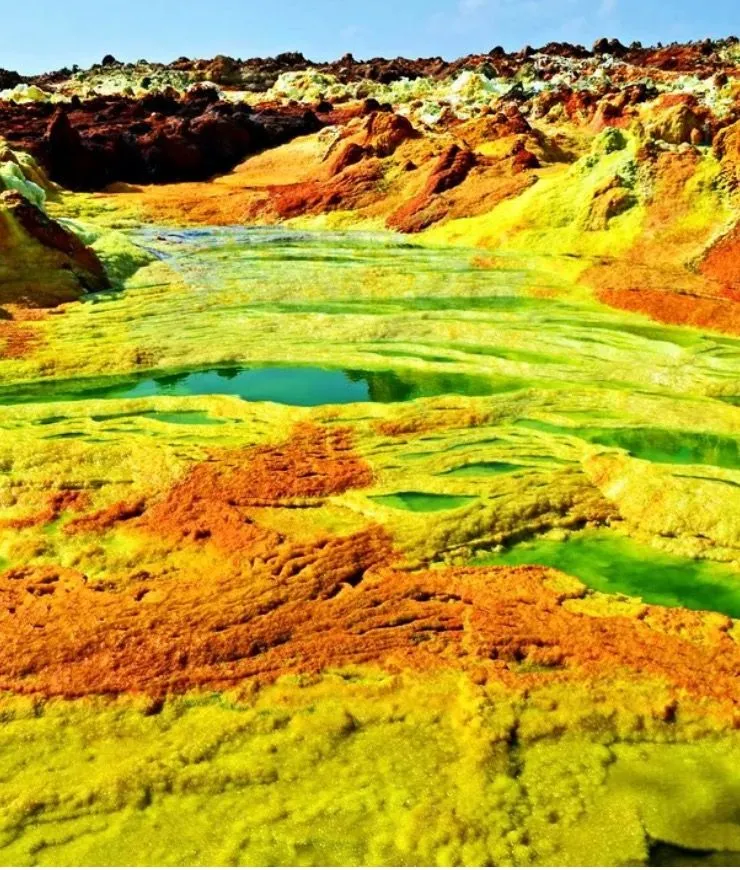 @3amgrind/reddit.com
@3amgrind/reddit.com
The Danakil Depression is a geological marvel, shaped by the forces of nature over millions of years. At its heart lies the Dallol Volcano, one of the lowest and hottest places on Earth. Here, bubbling hot springs and fumaroles spew a toxic mix of sulfur, salt, and minerals, creating a kaleidoscope of vibrant colors stretching across the barren landscape.
50. Rainbow River
The Rainbow River in Colombia is a mesmerizing display of vibrant colors. A palette of reds, yellows, purples, and greens paints a stunning picture as it cascades through the Serranía de la Macarena National Park, shifting the hues depending on the lighting conditions. The predominant shade is red, attributed to the presence of Macarenia clavigera plants lining the riverbed.
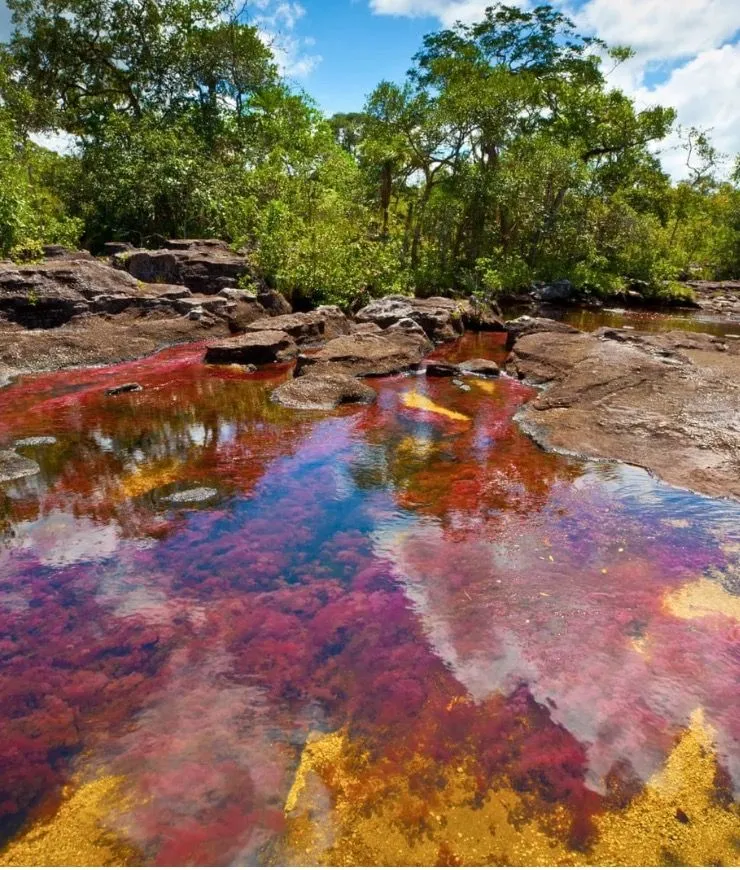 @cryptoearningway/reddit.com
@cryptoearningway/reddit.com
On the hottest days, the palette of the river is dominated by rich shades of crimson. The fantastic riot of colors occurs during the hottest time of the year. Here's something interesting: you can't drink this water—it lacks any salts or minerals and is almost distilled. By the way, due to this water composition and the specific course of the river, large fish are not found in Caño Cristales.